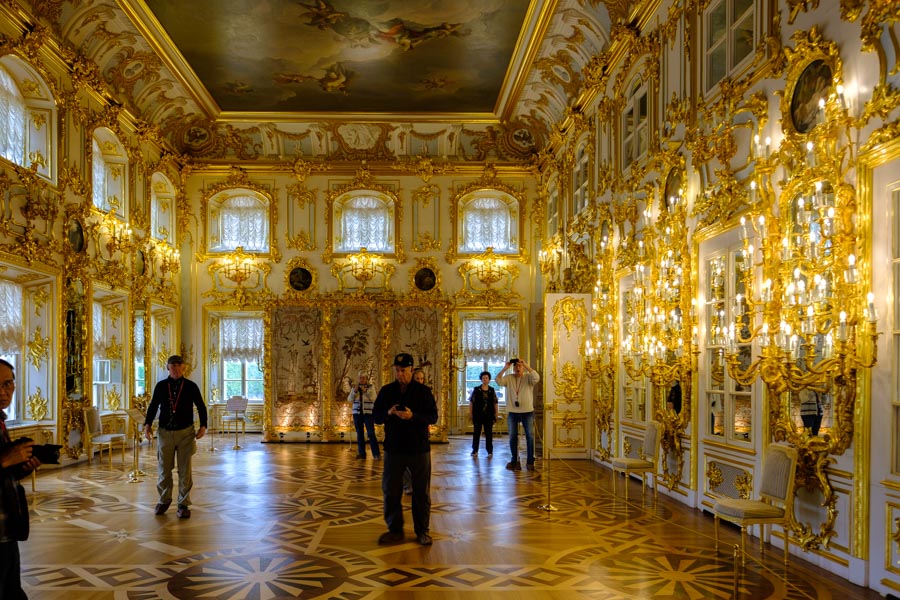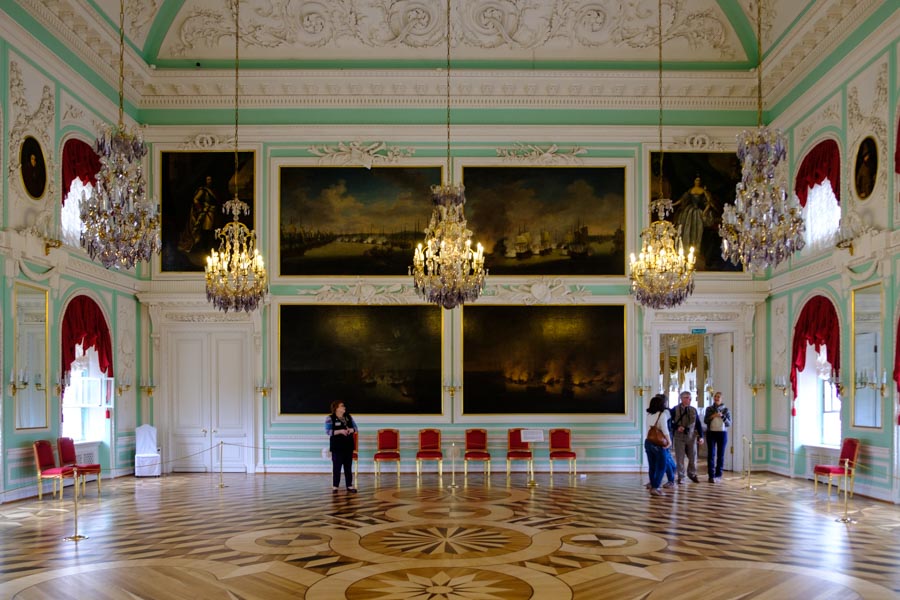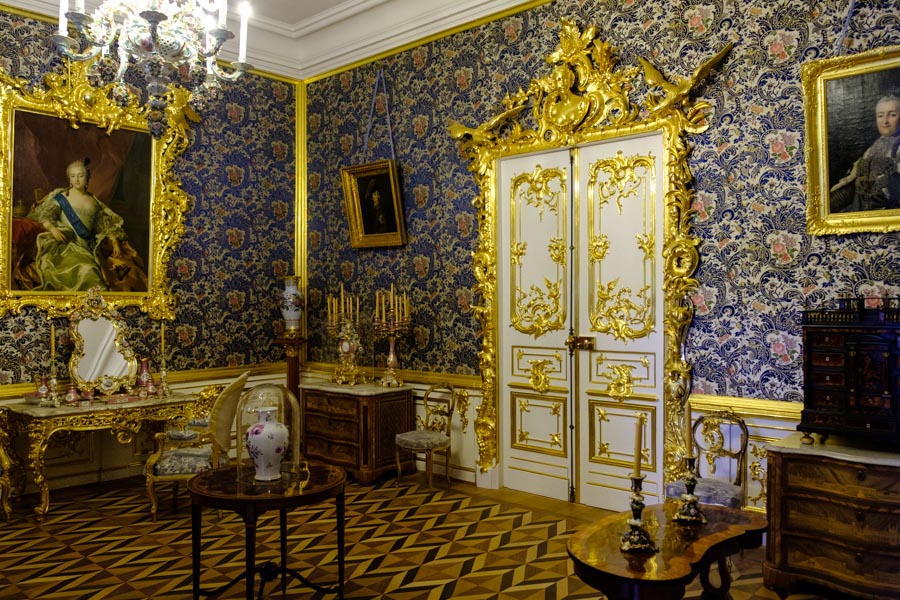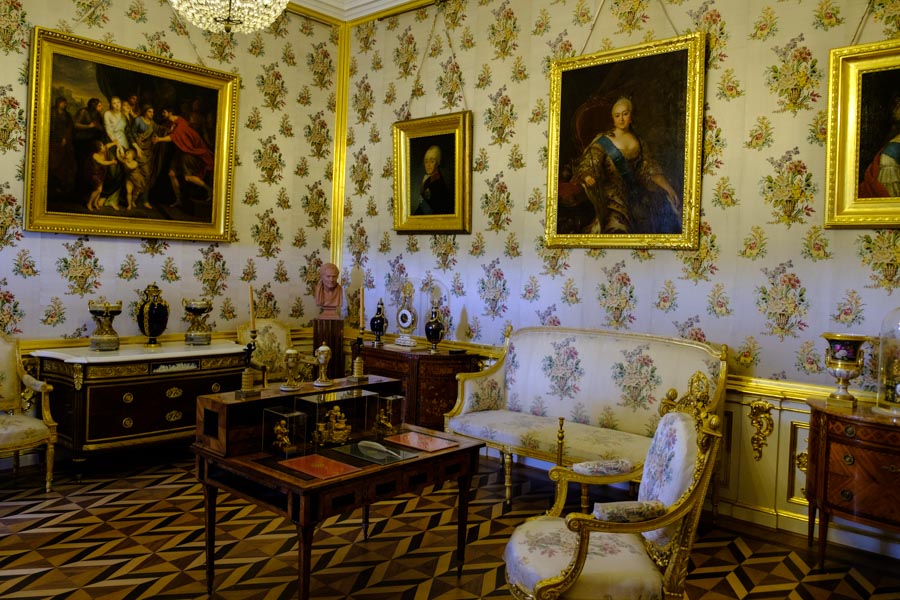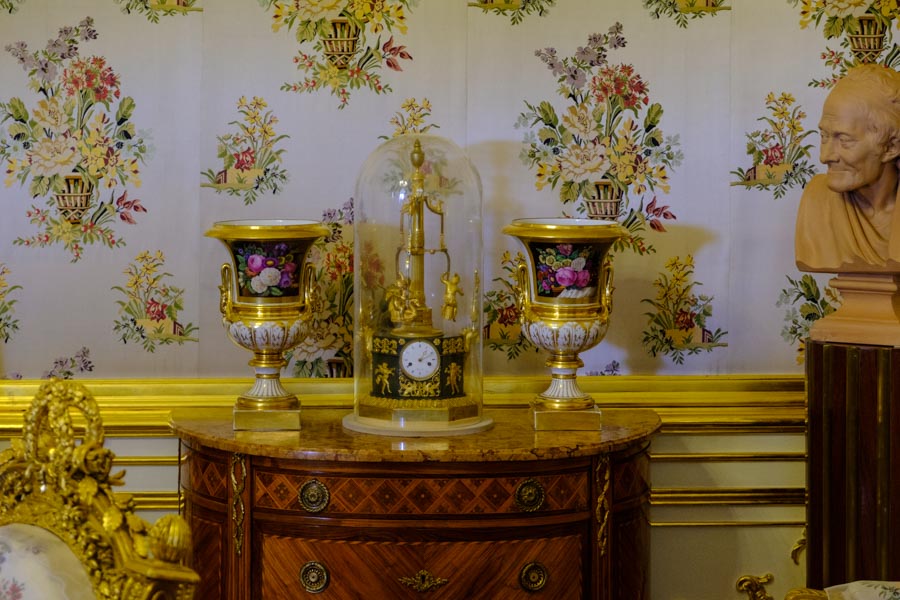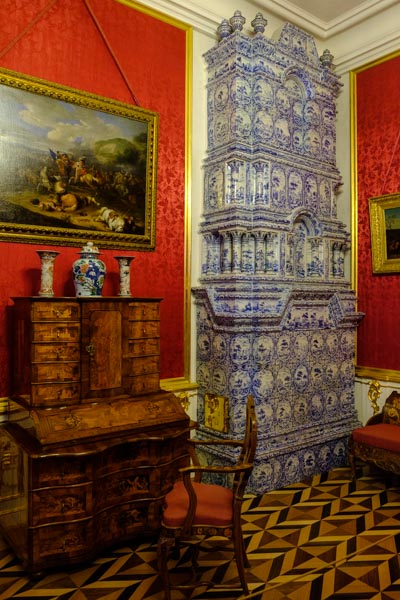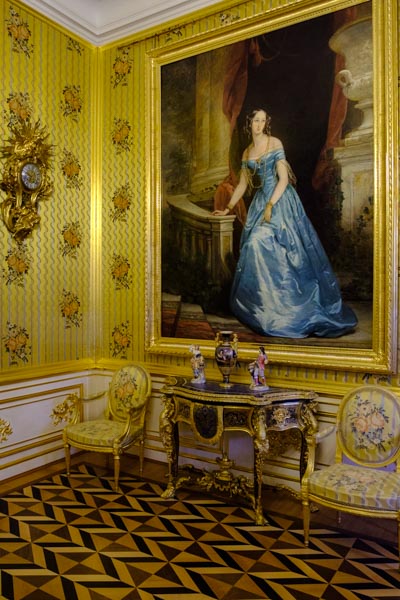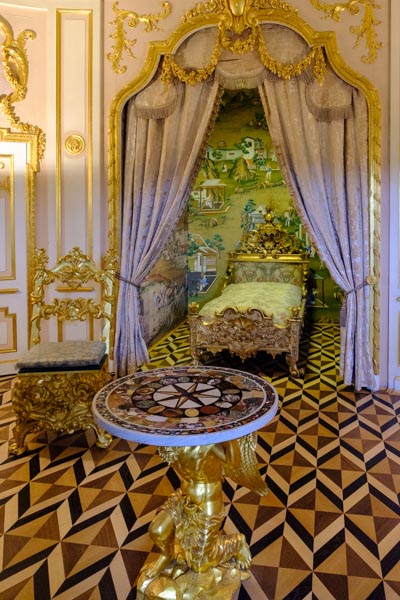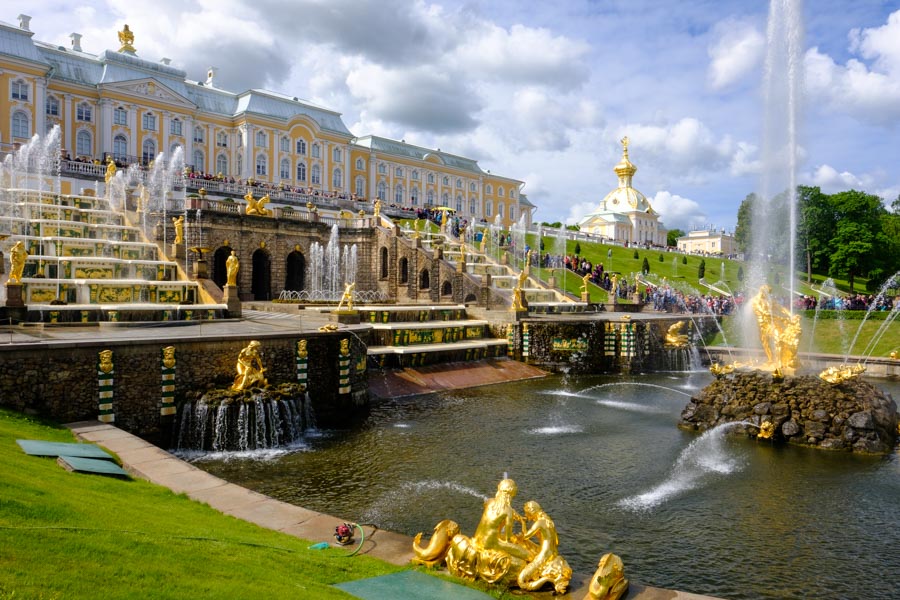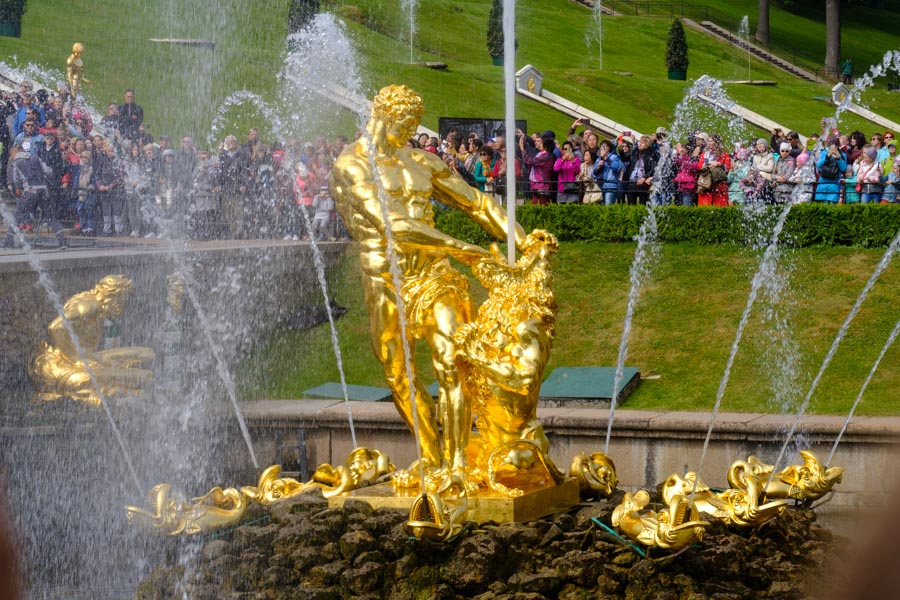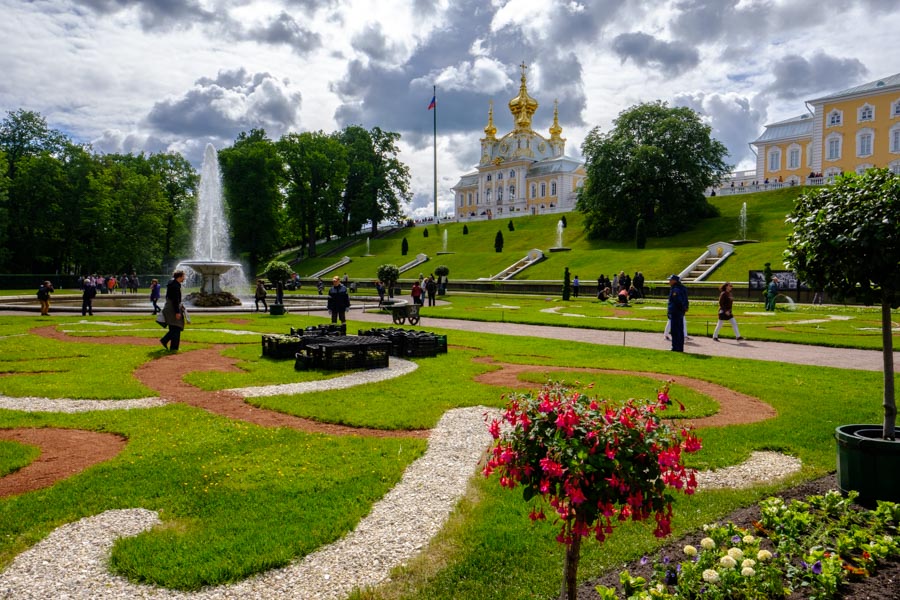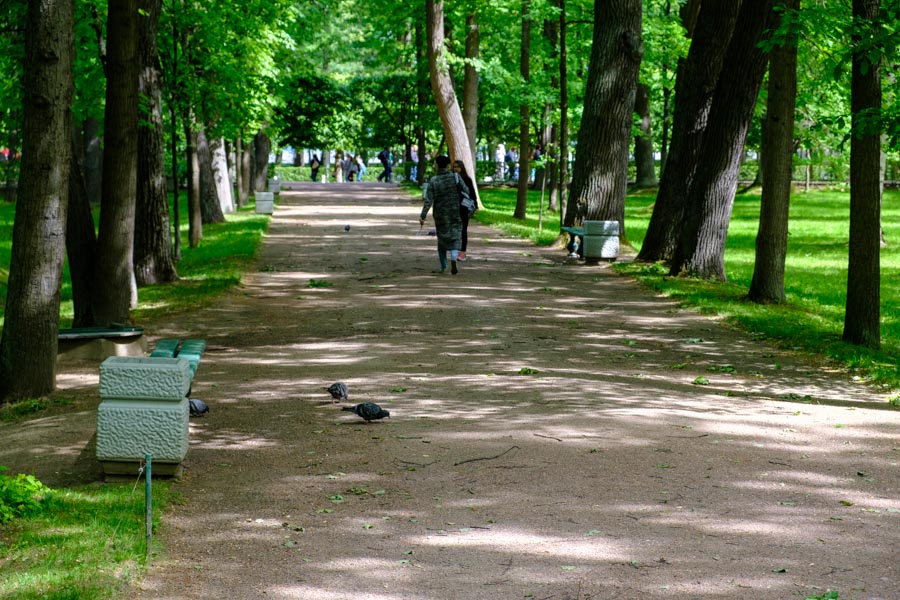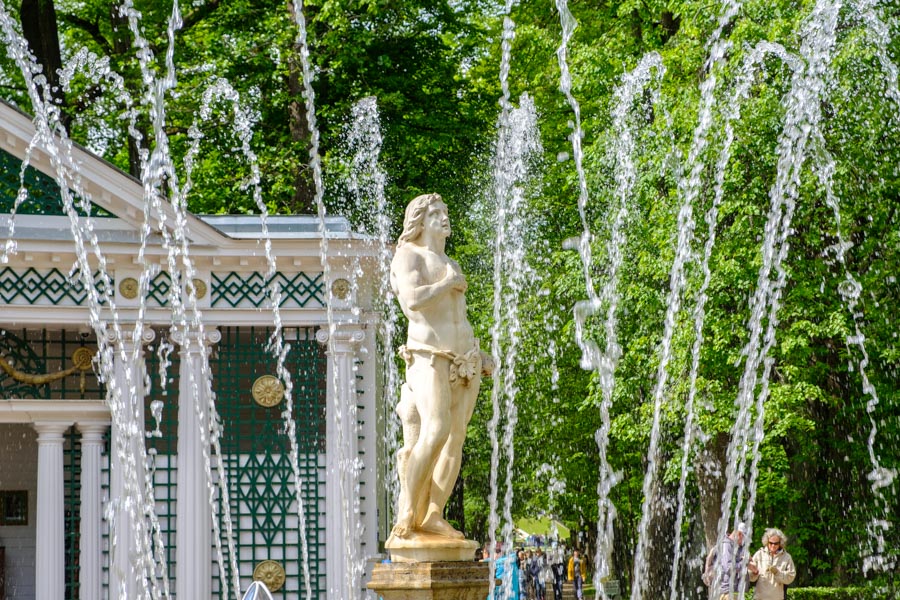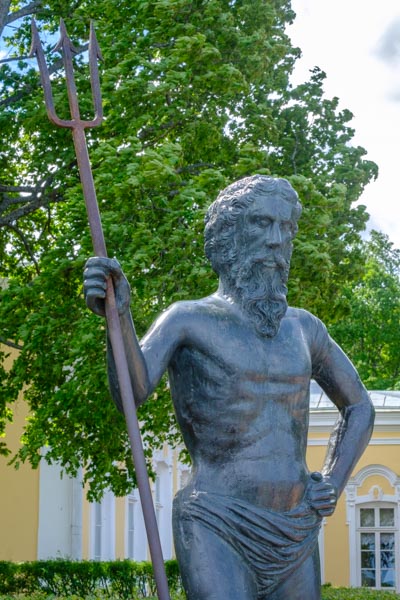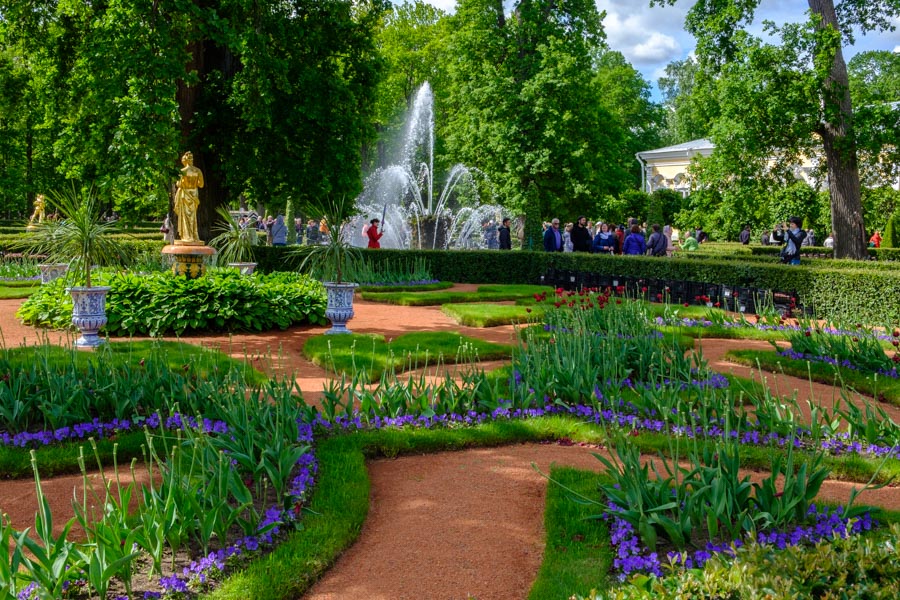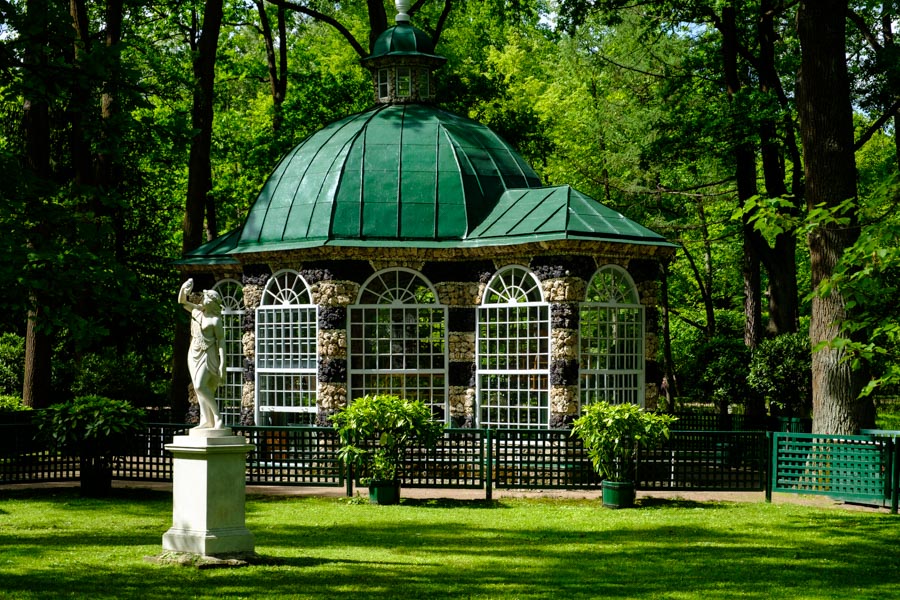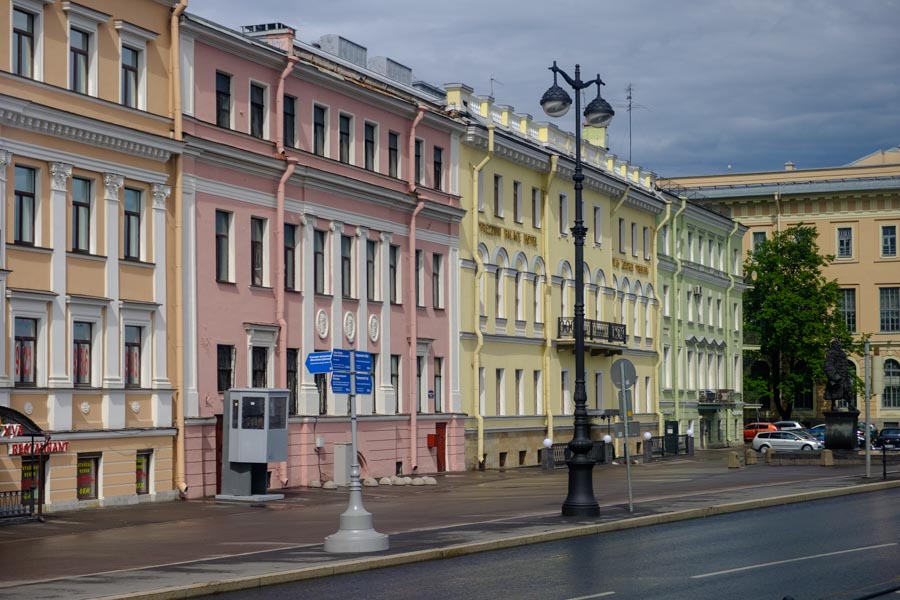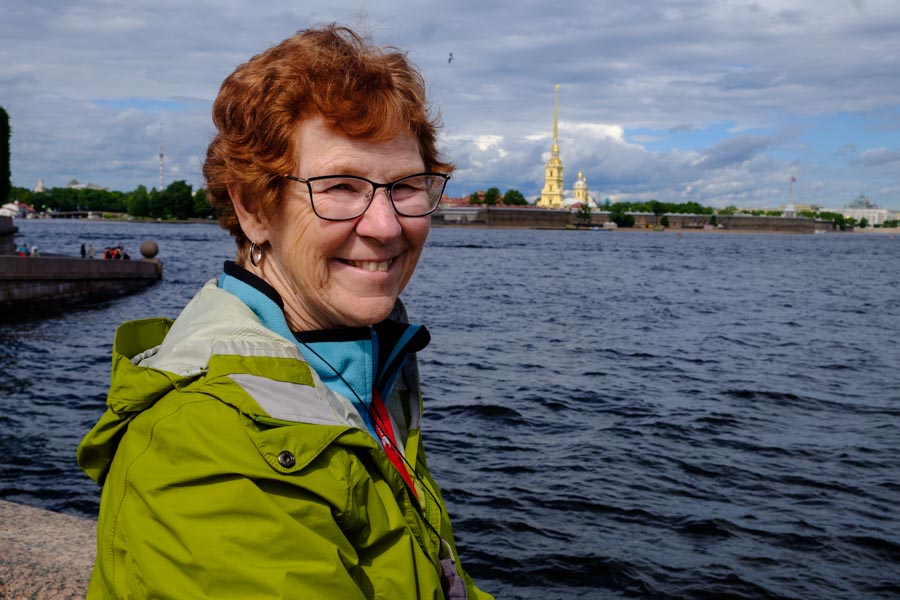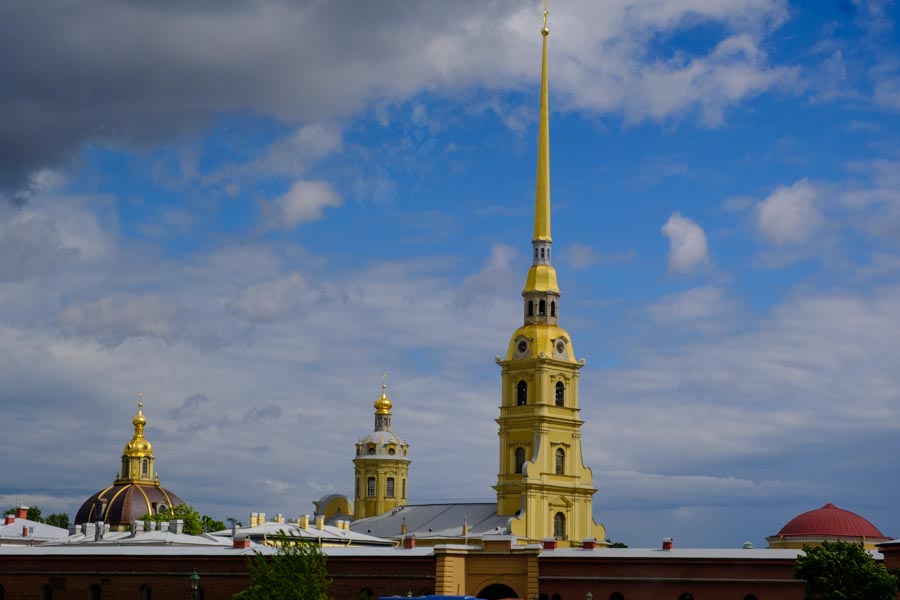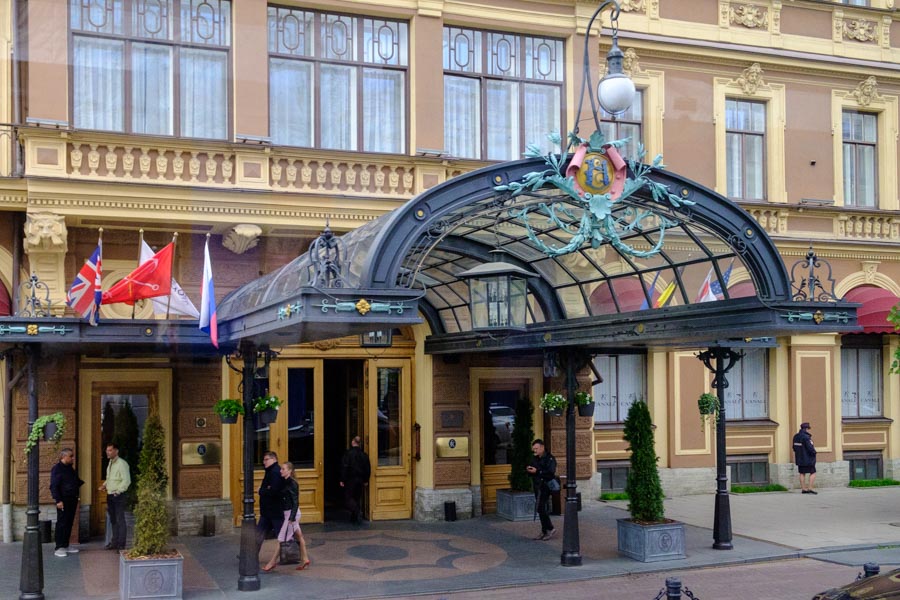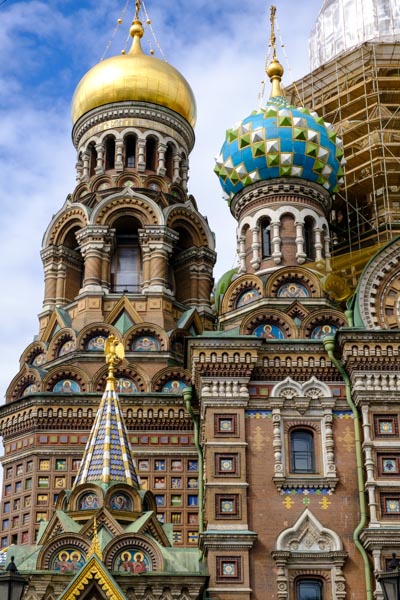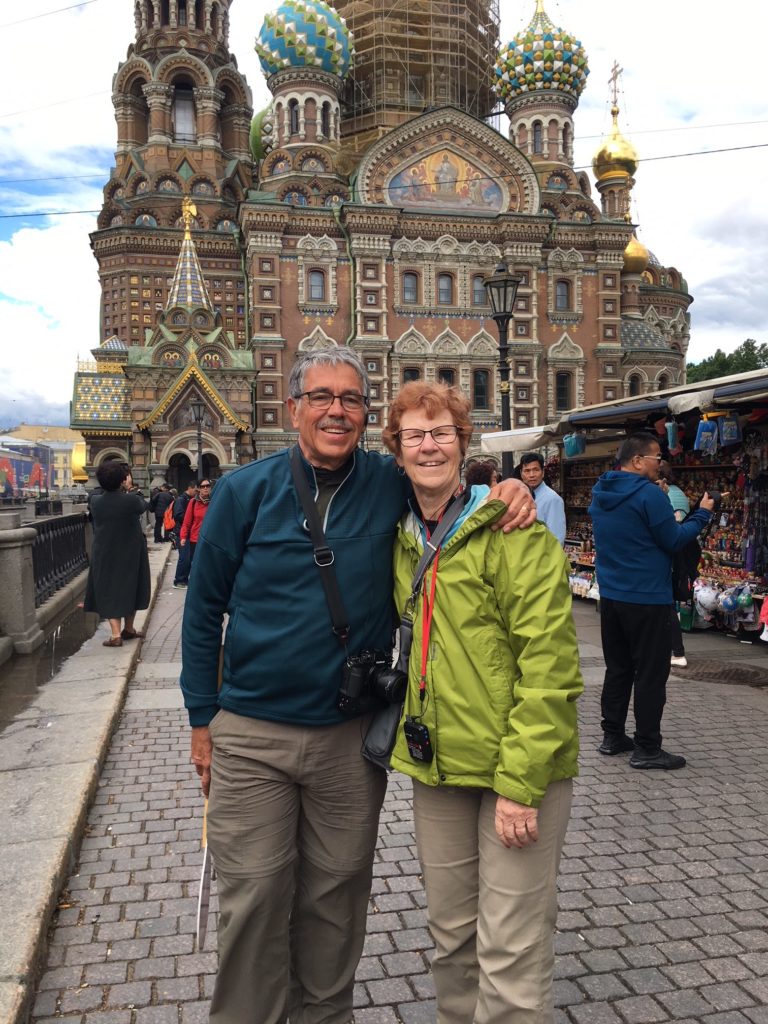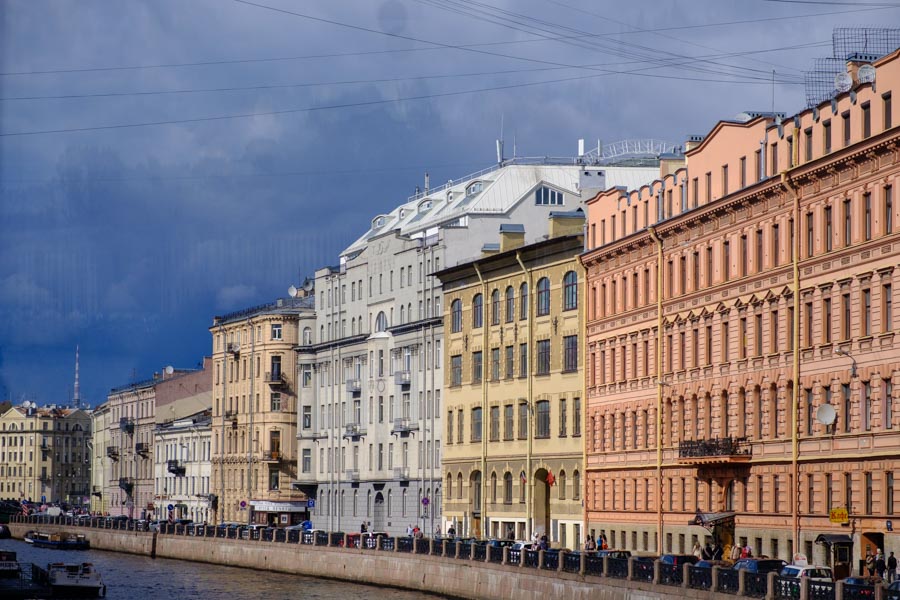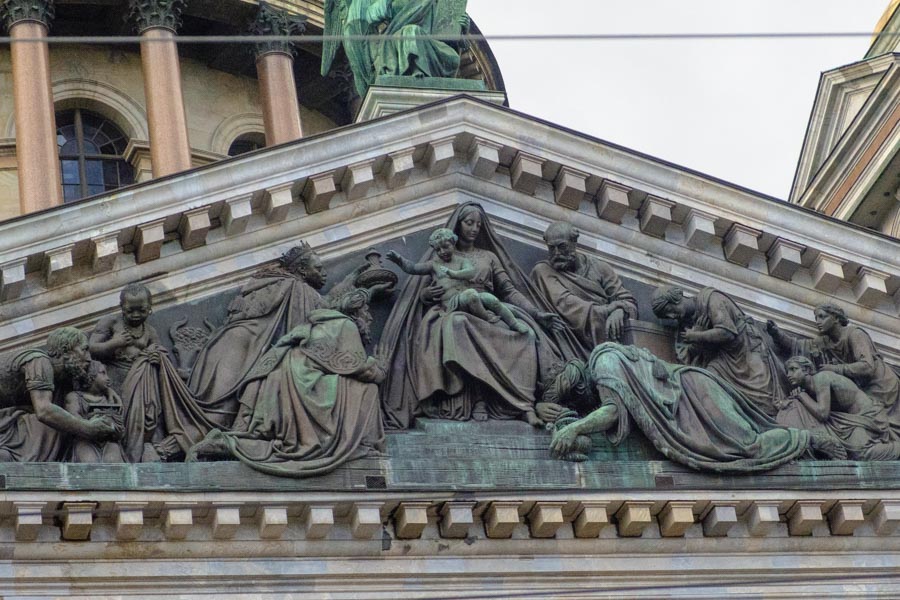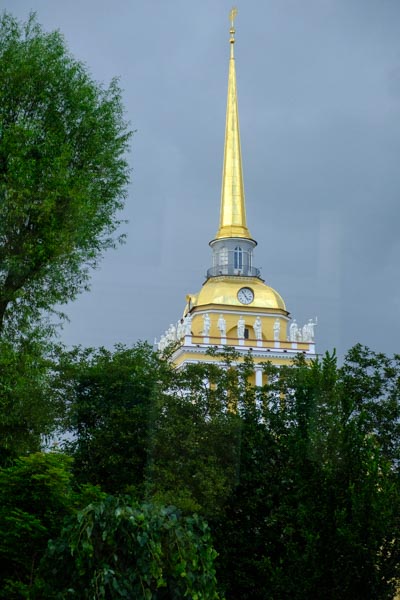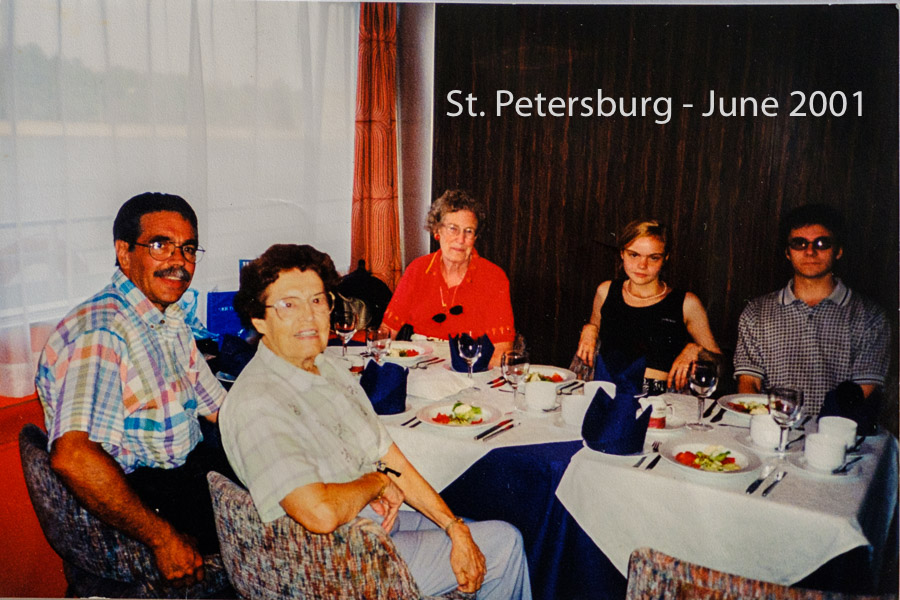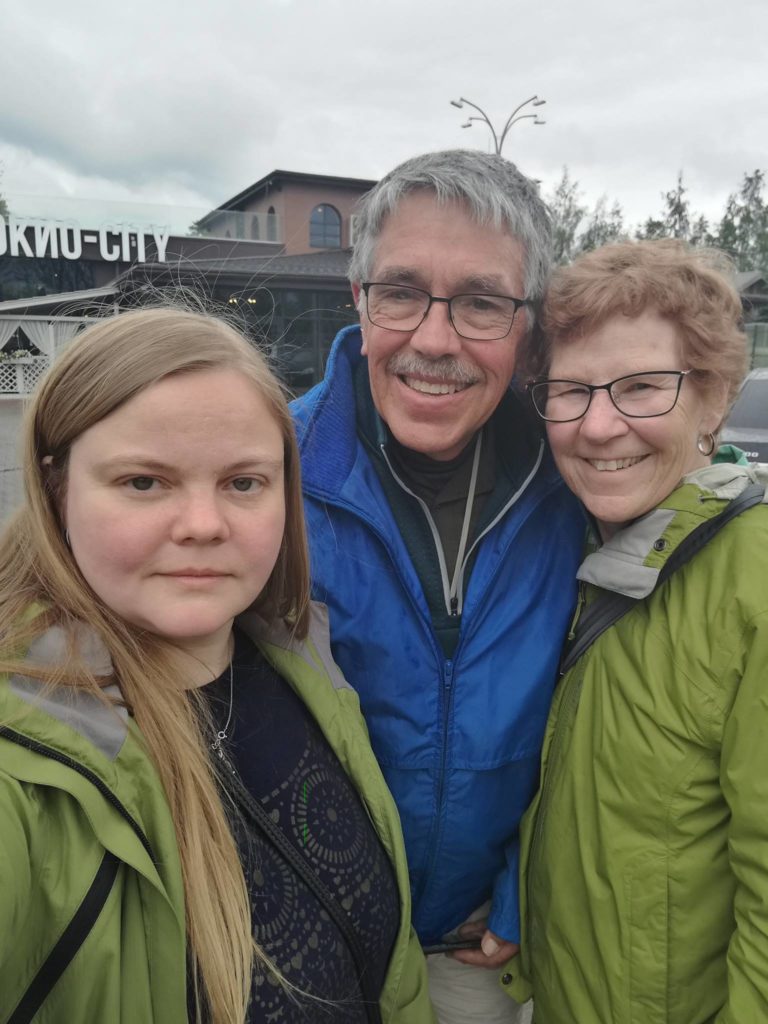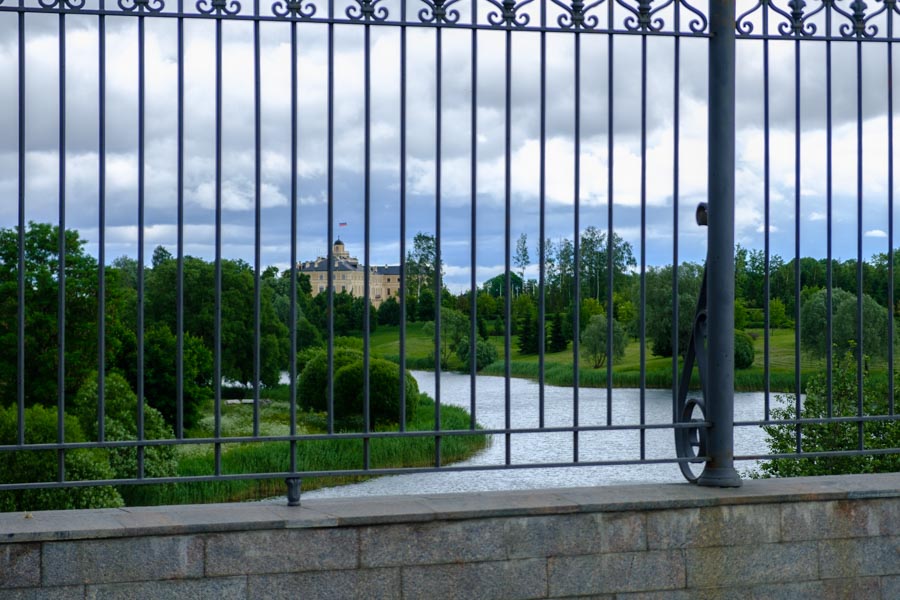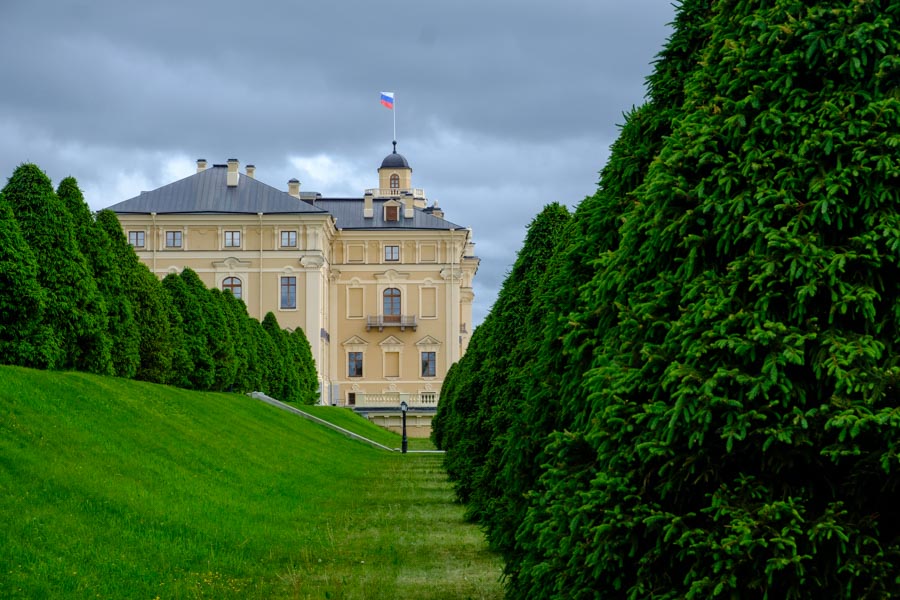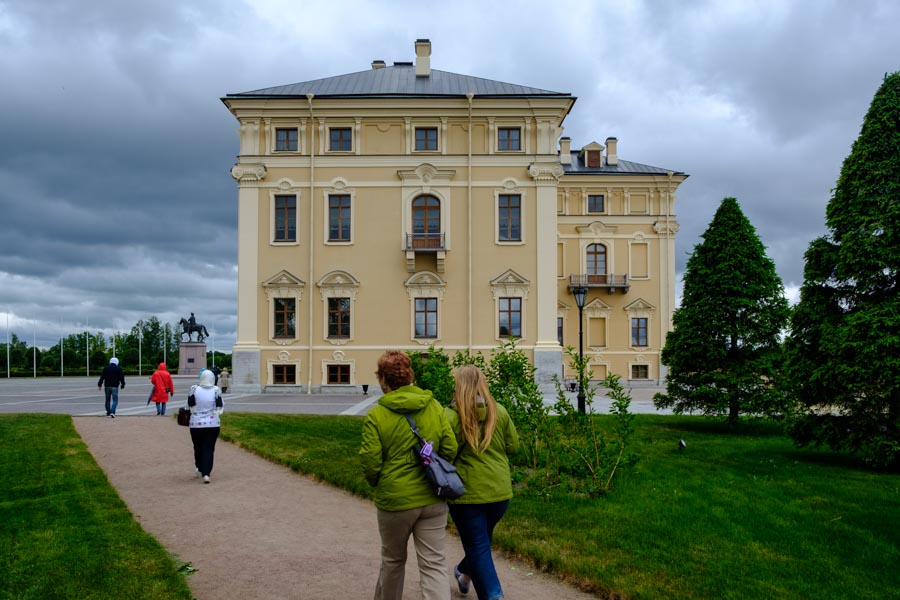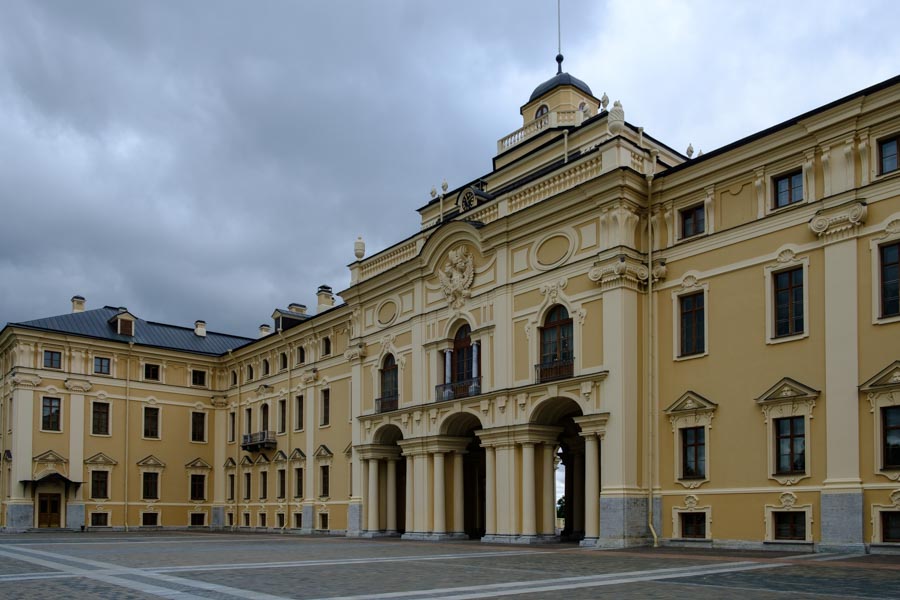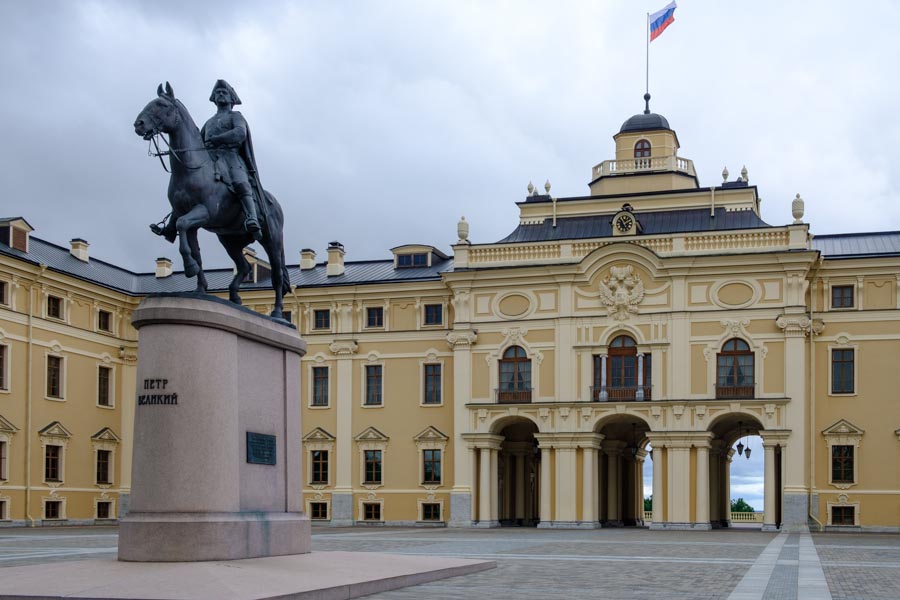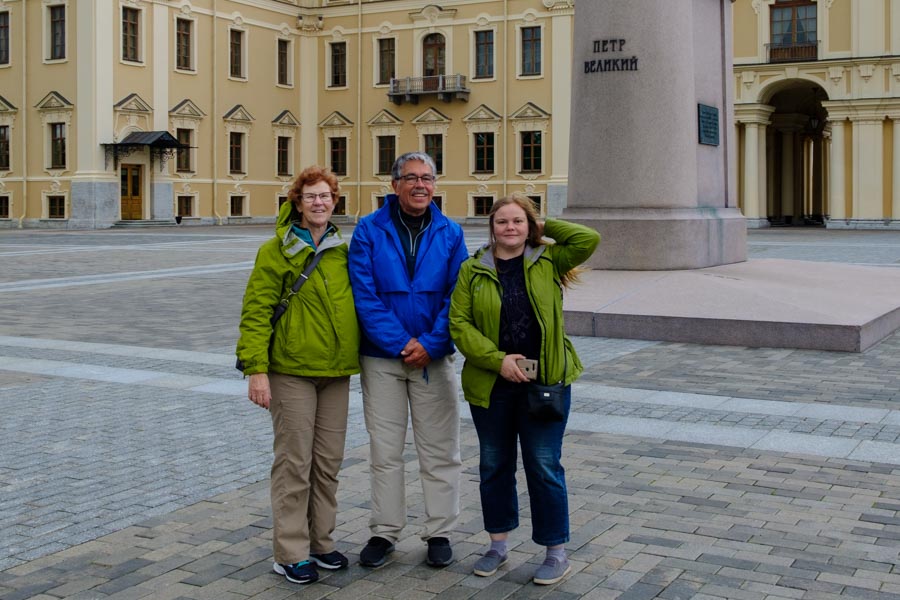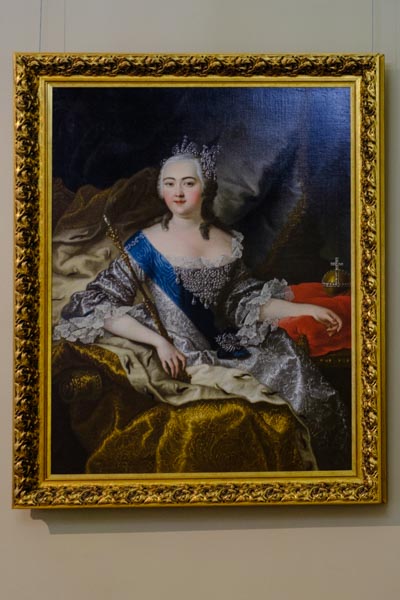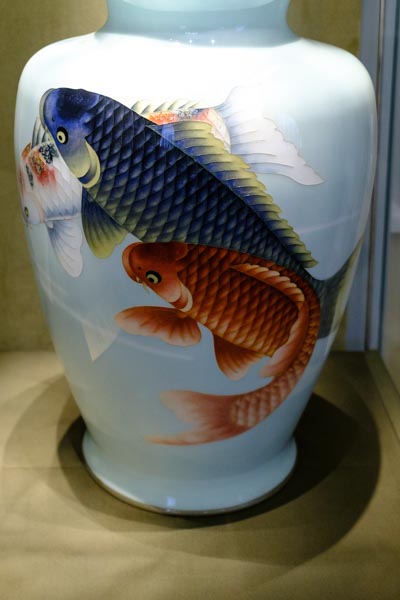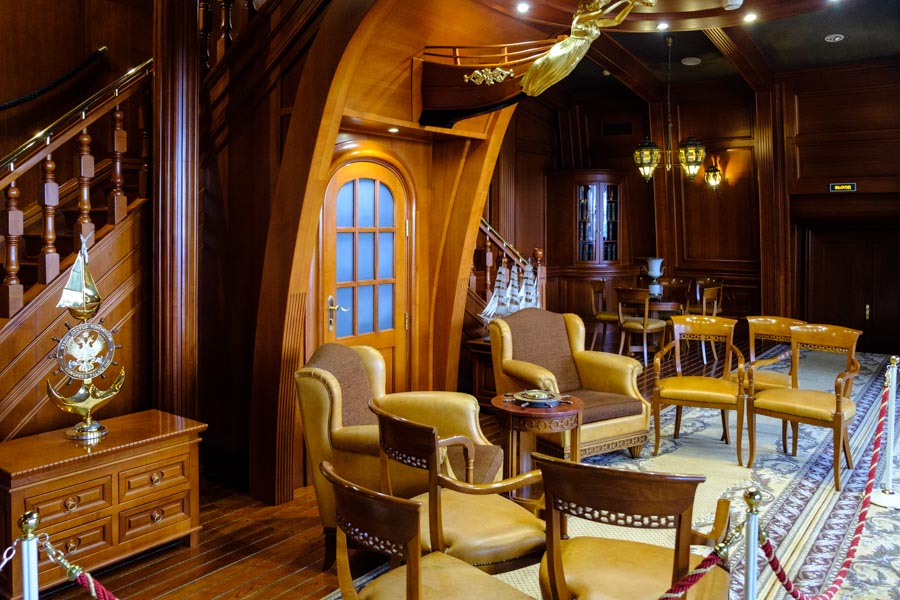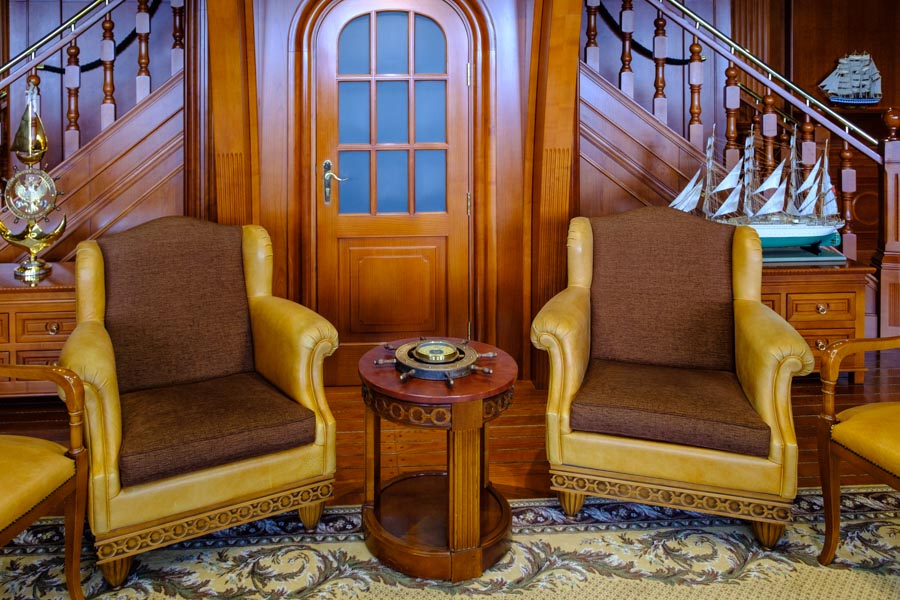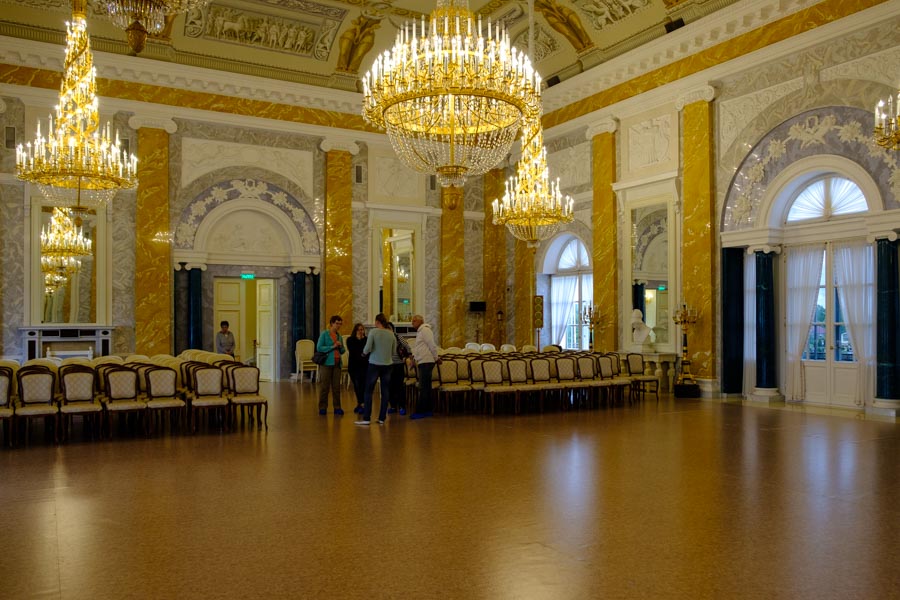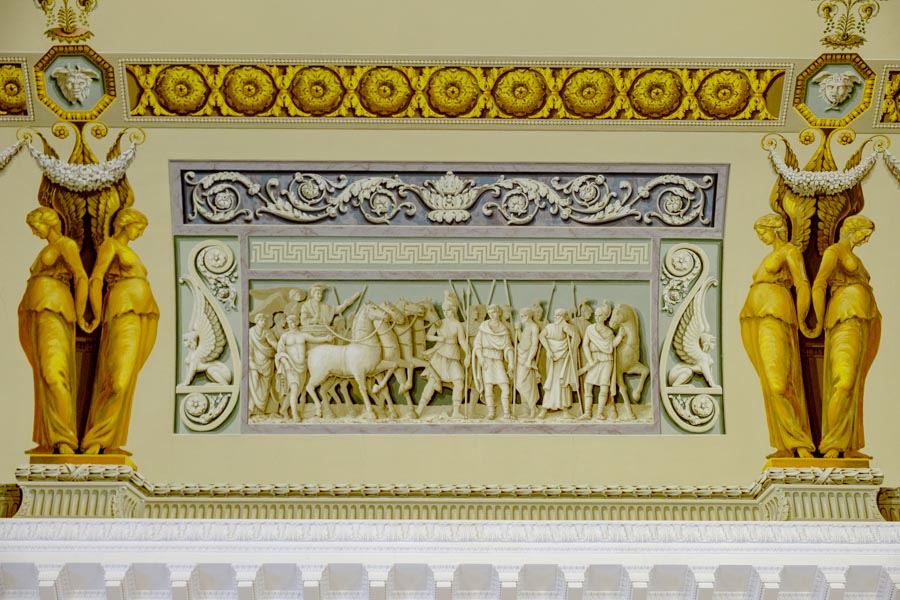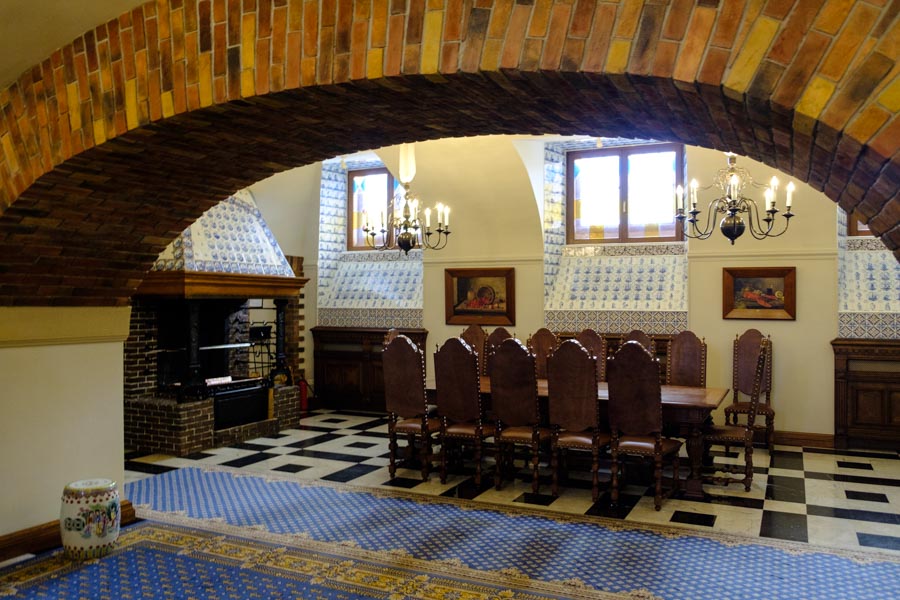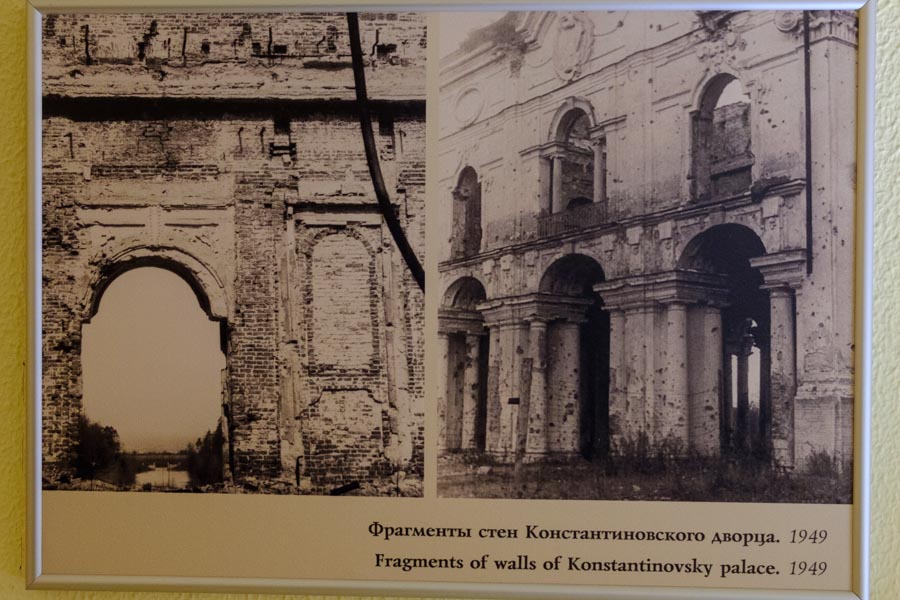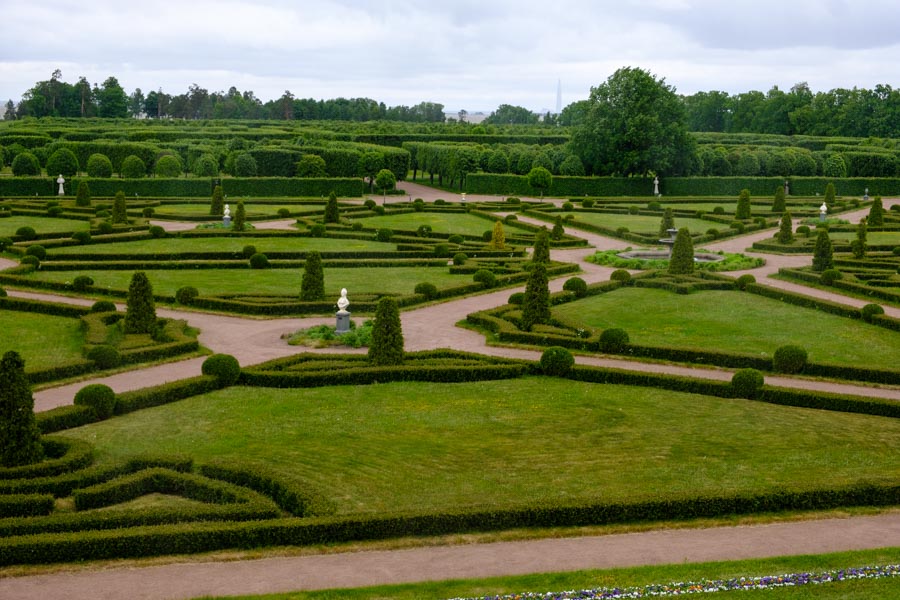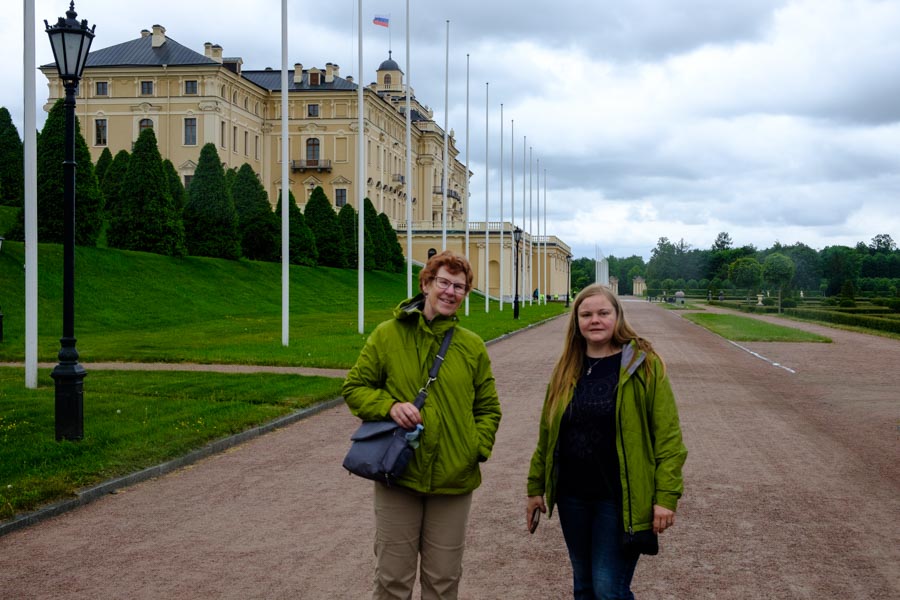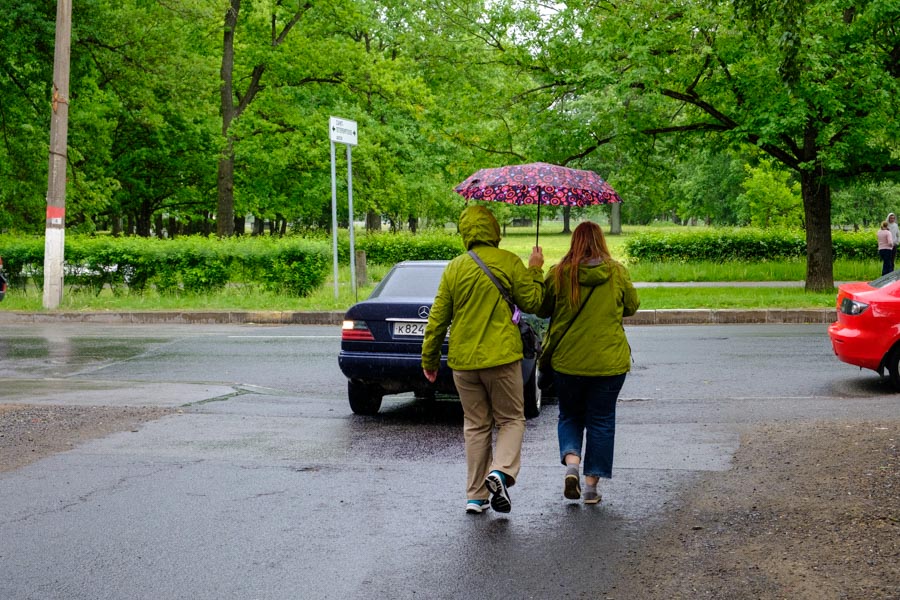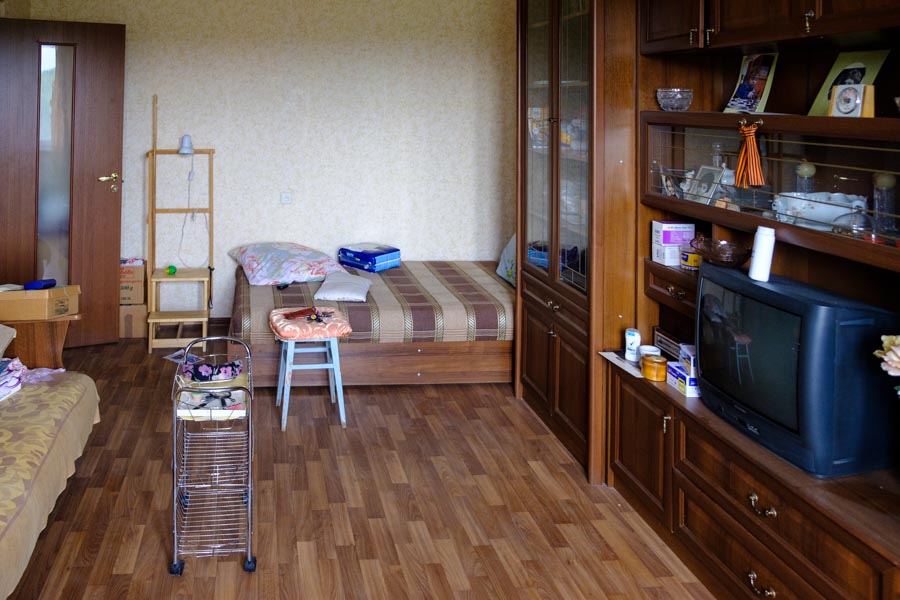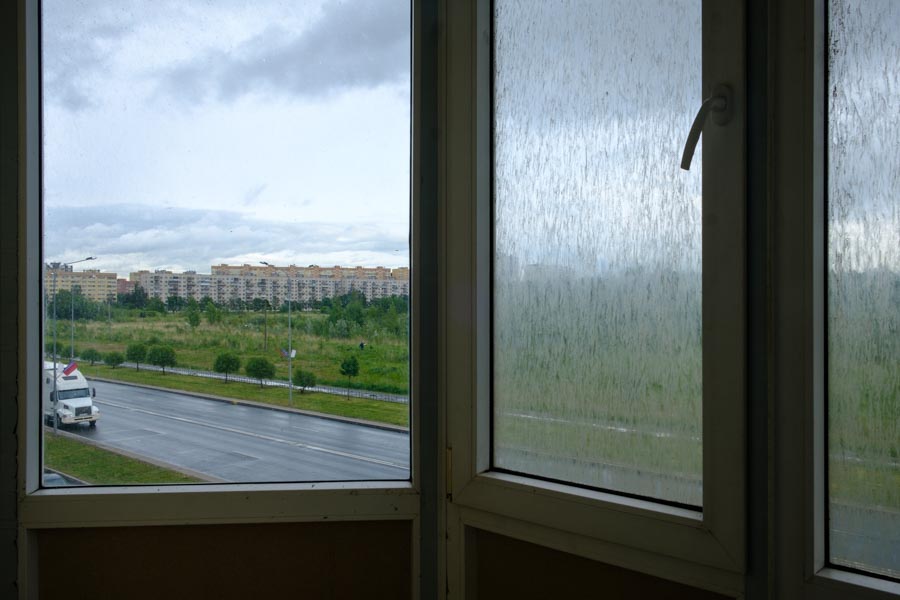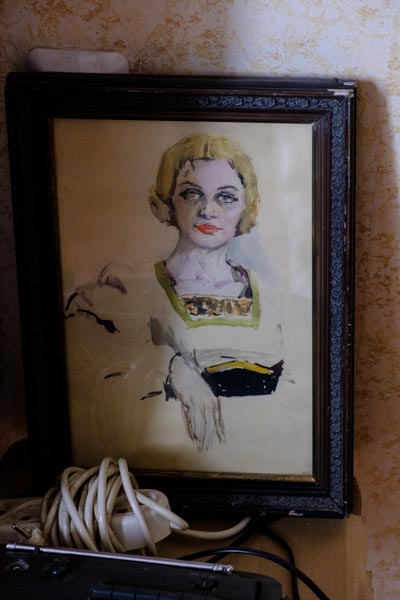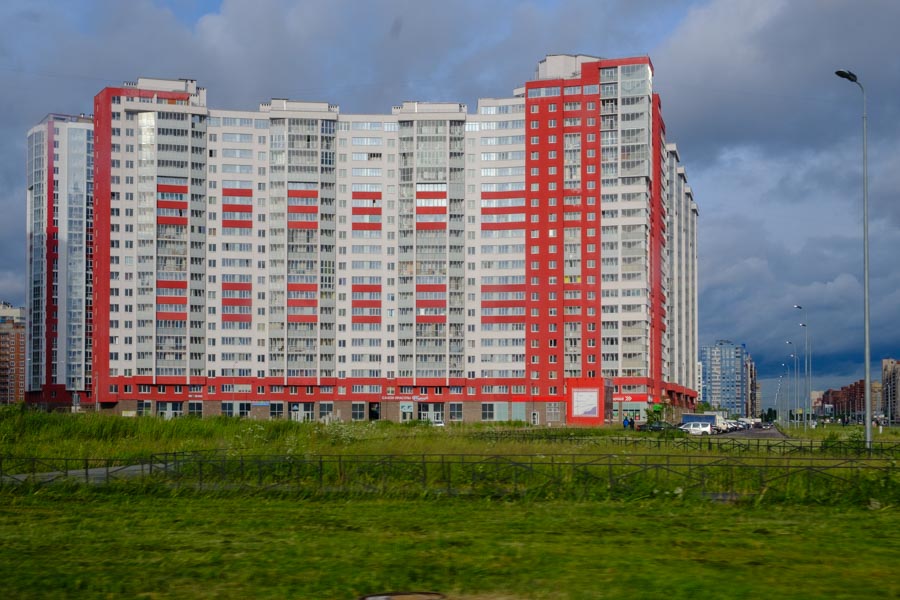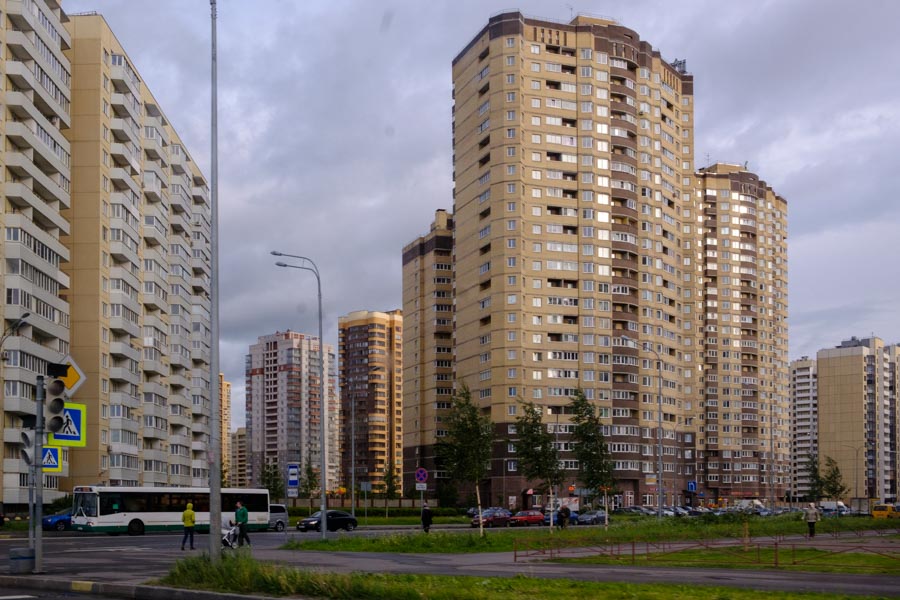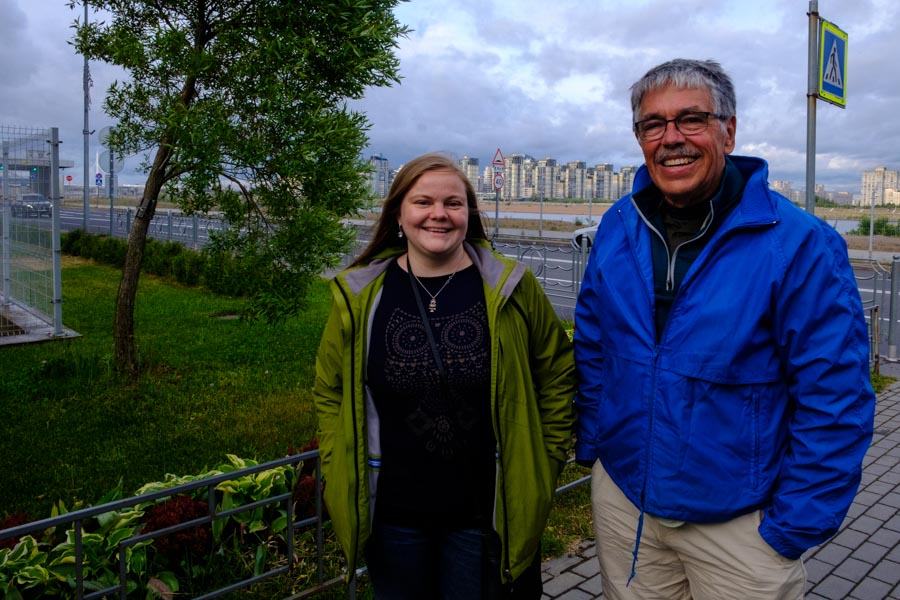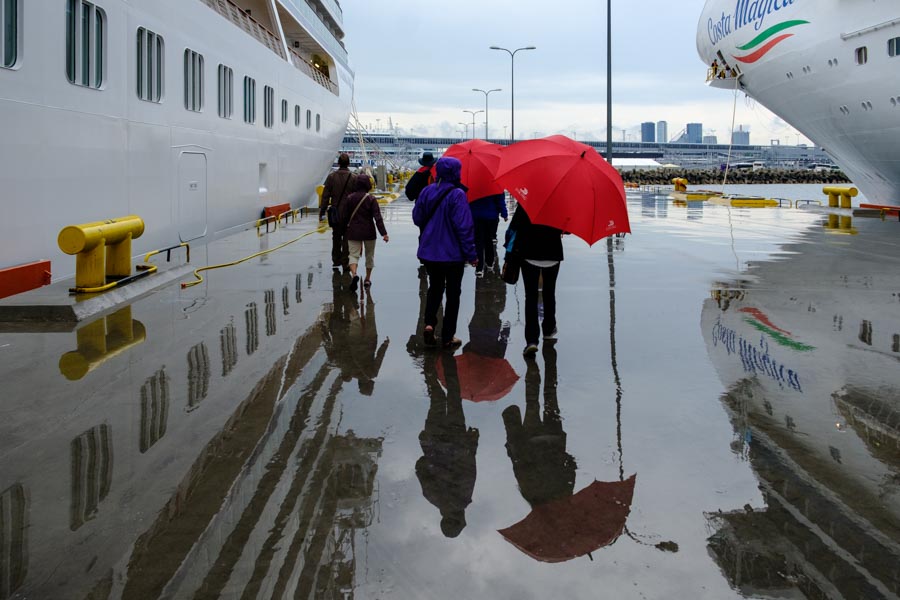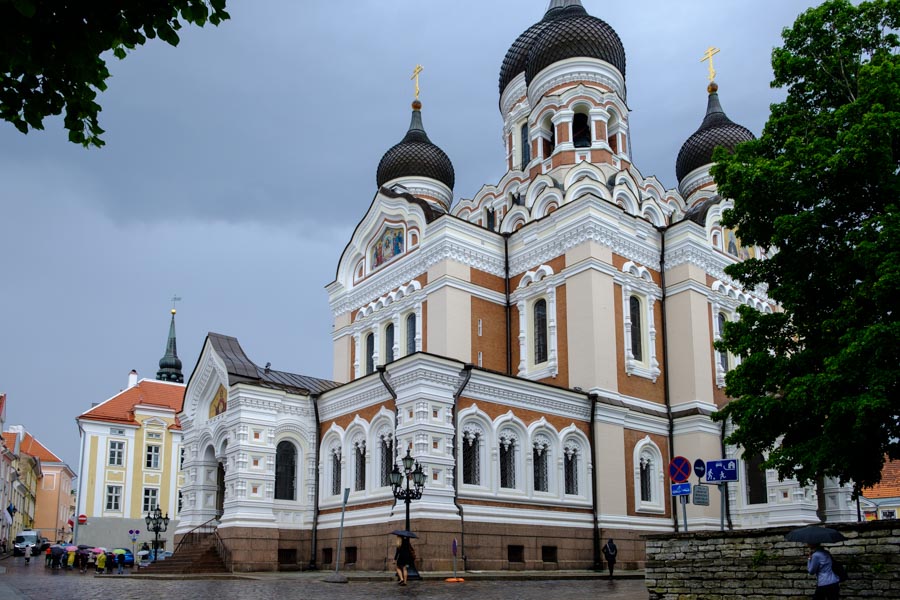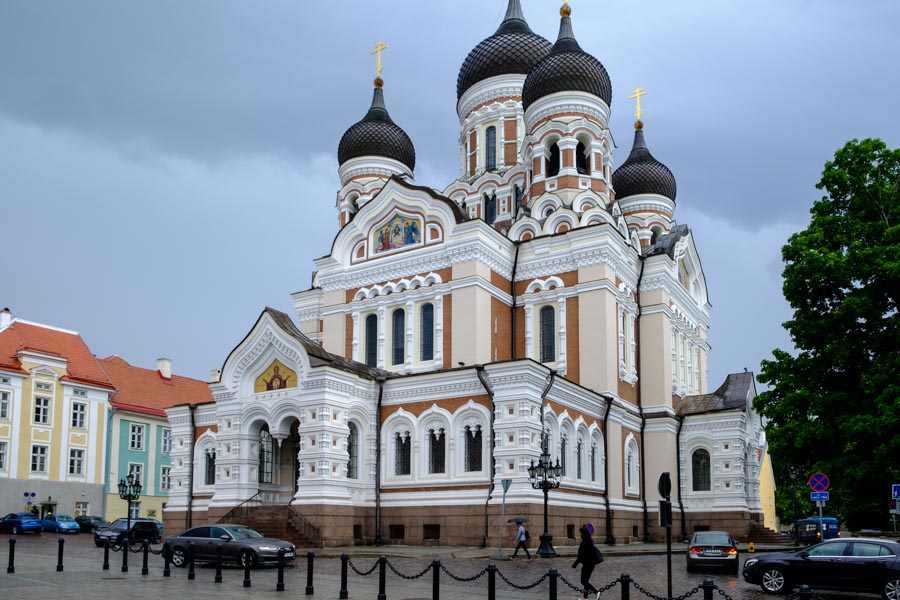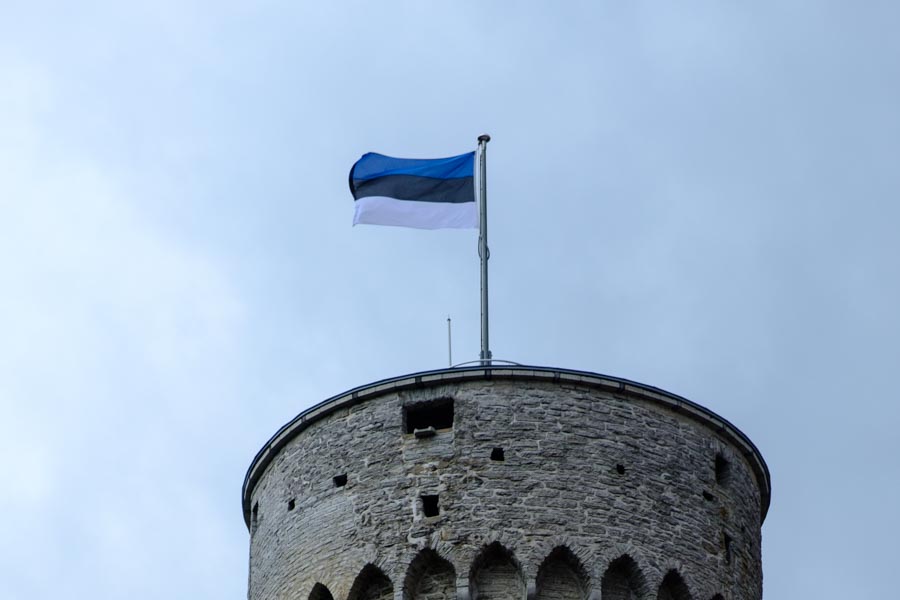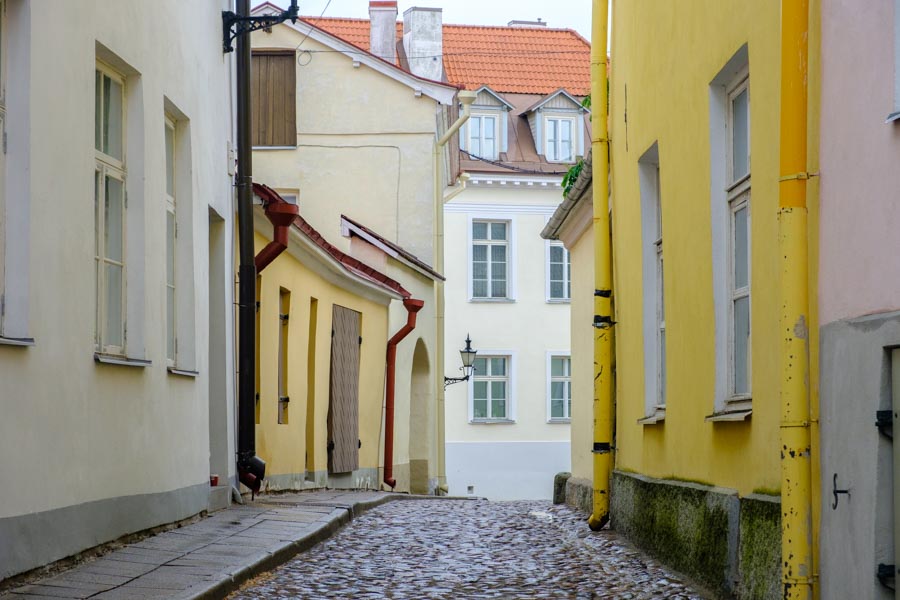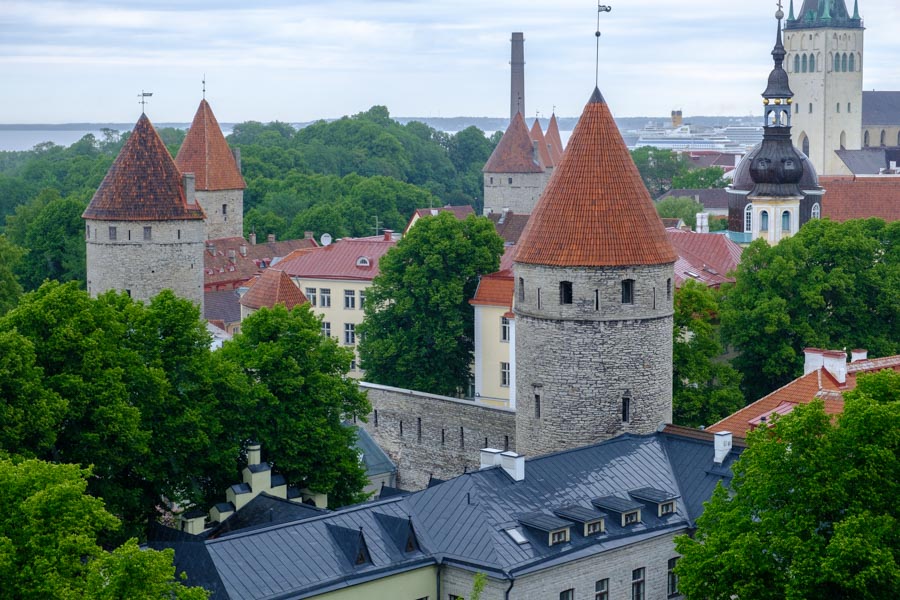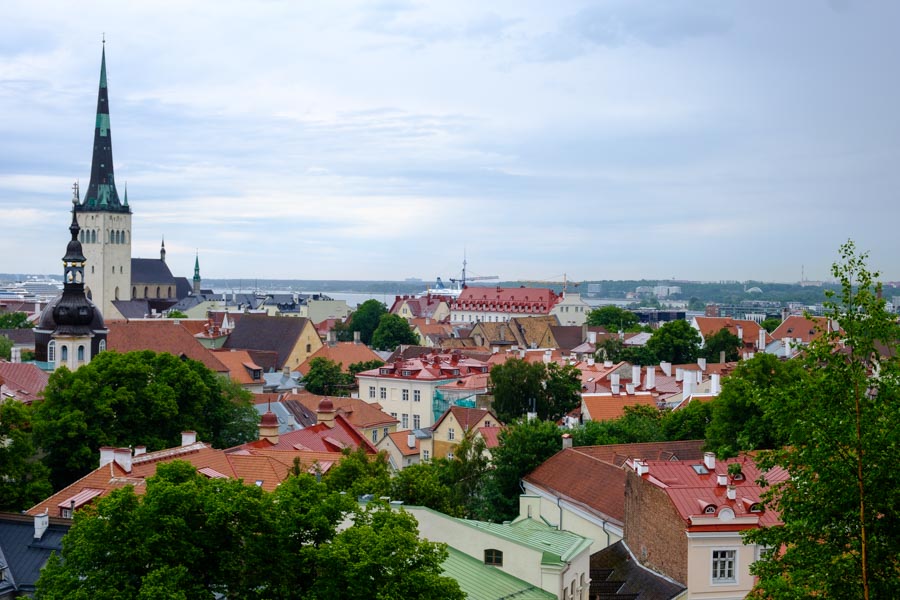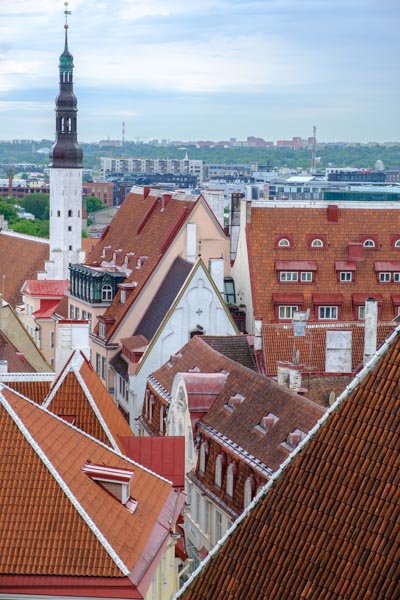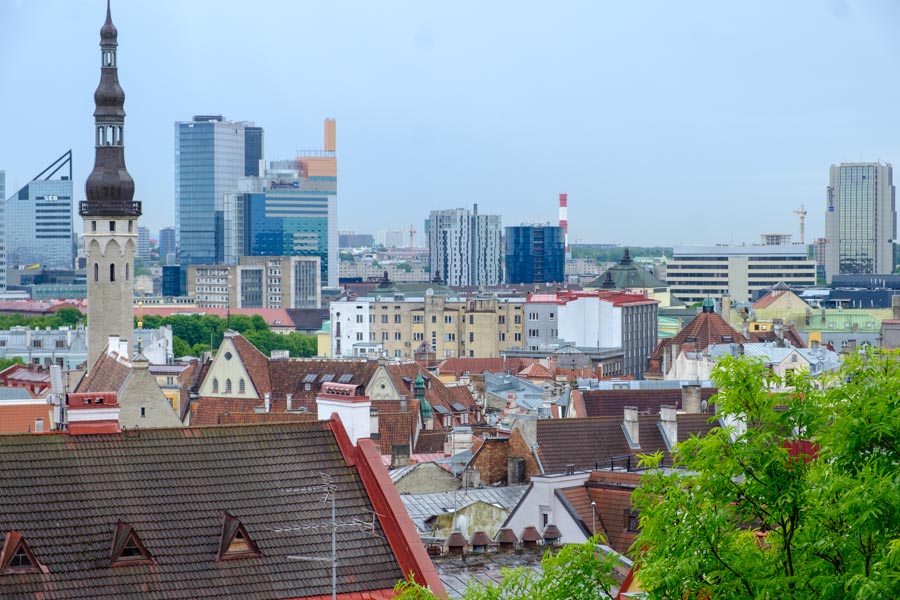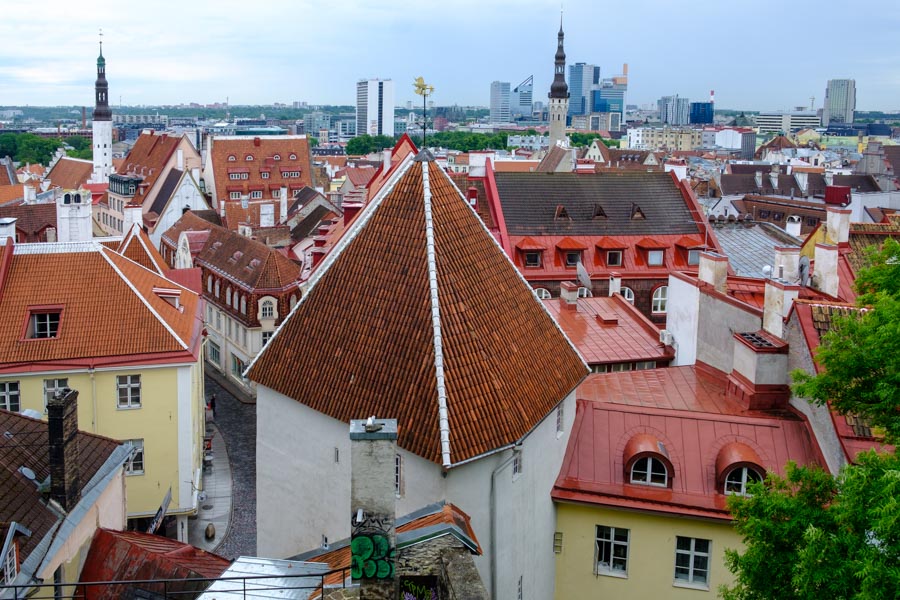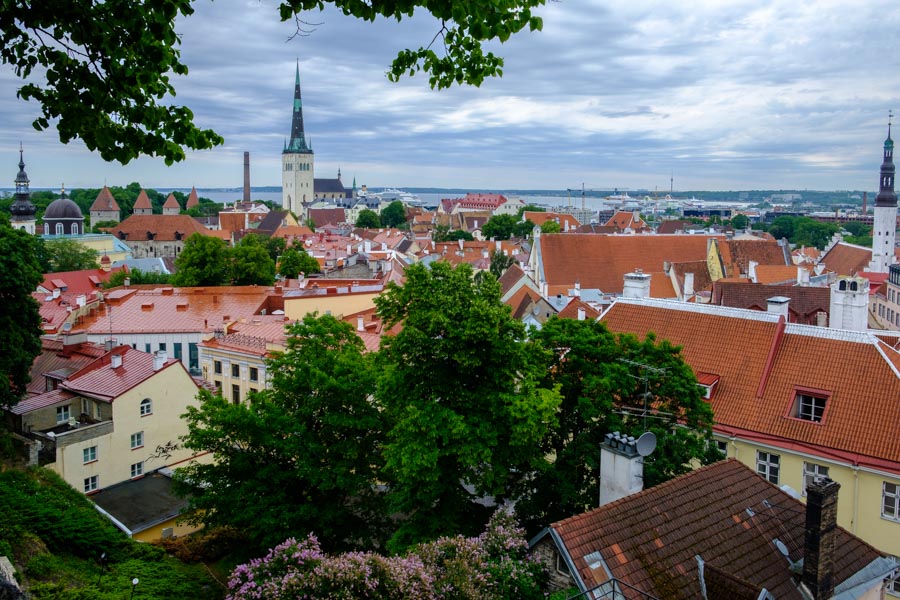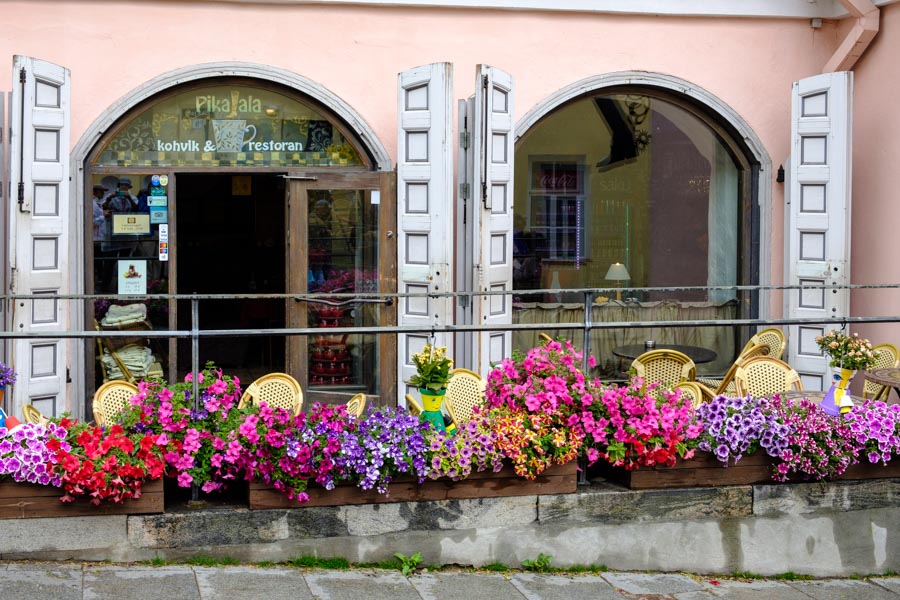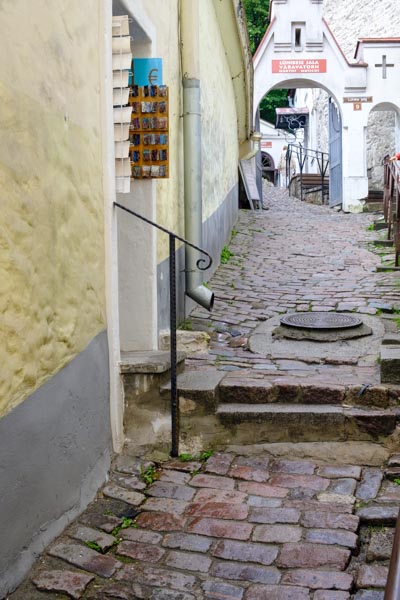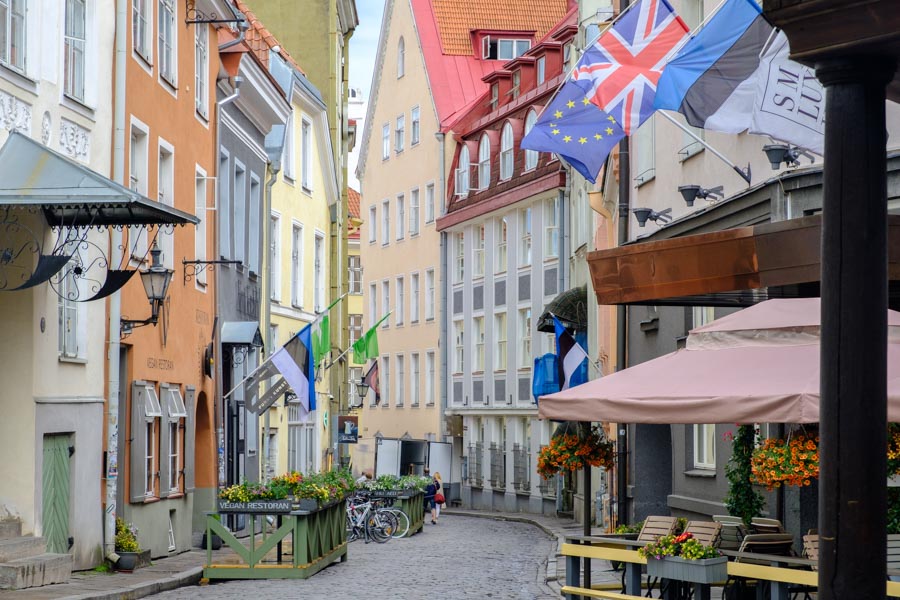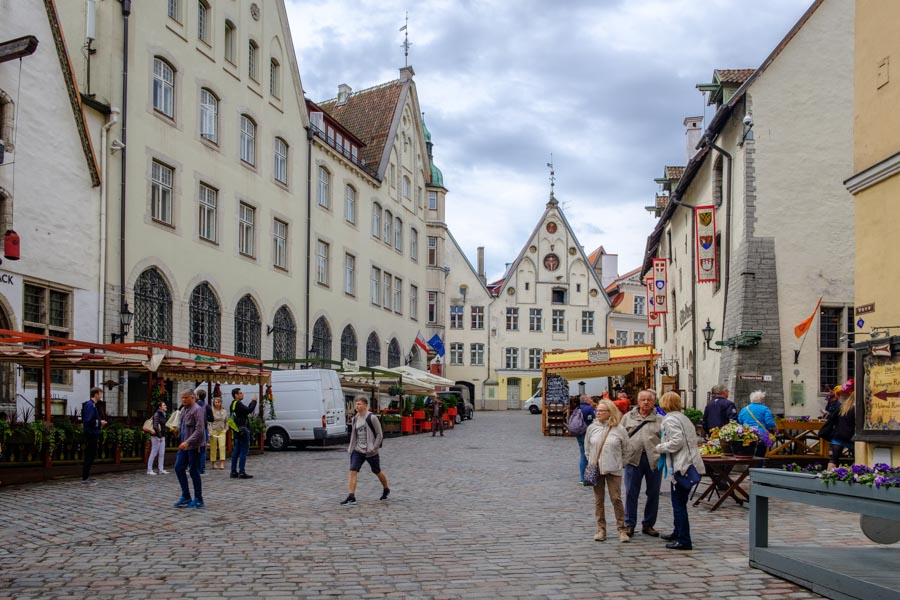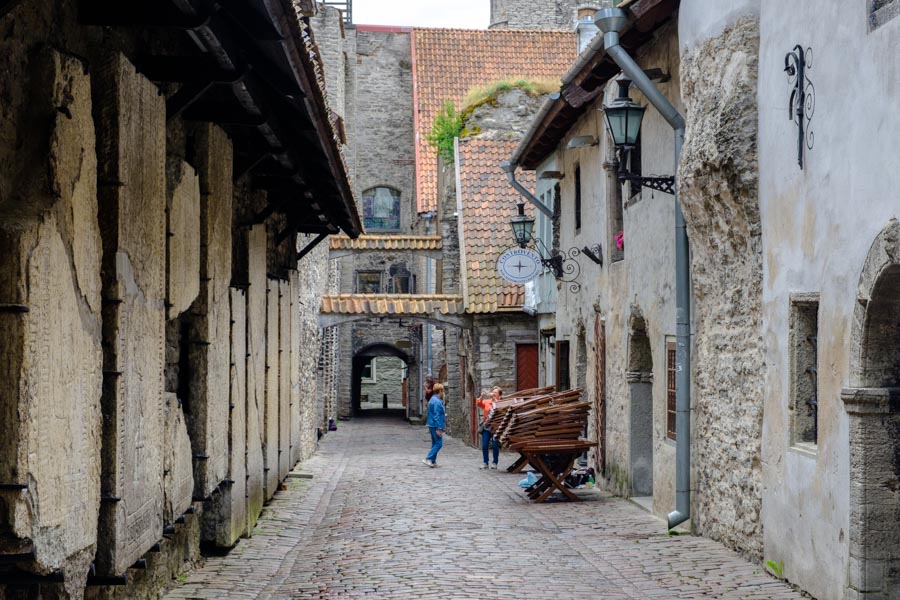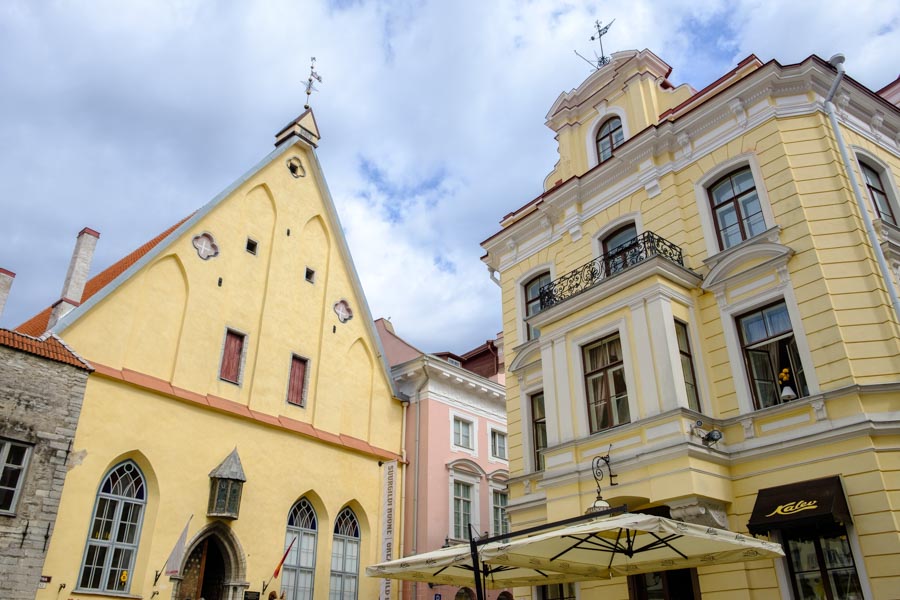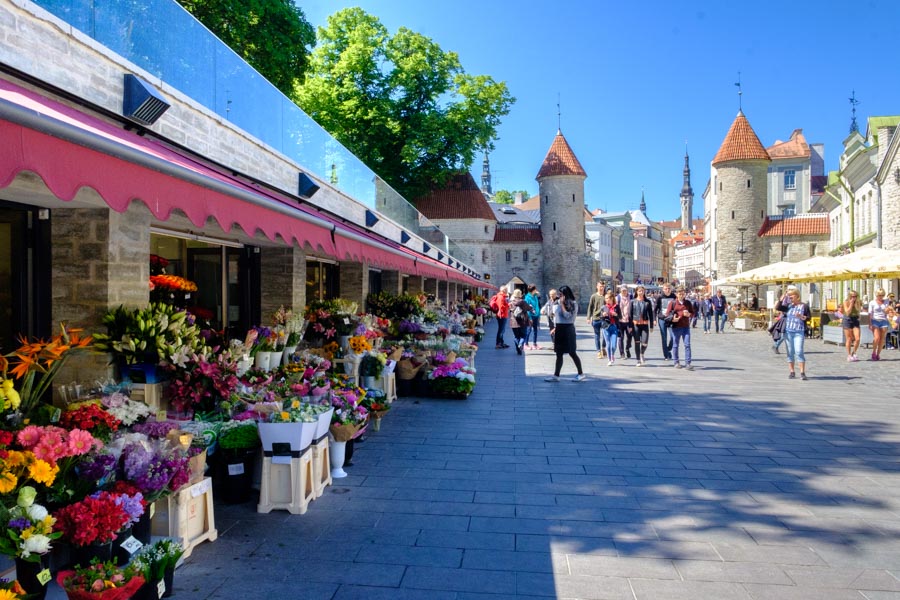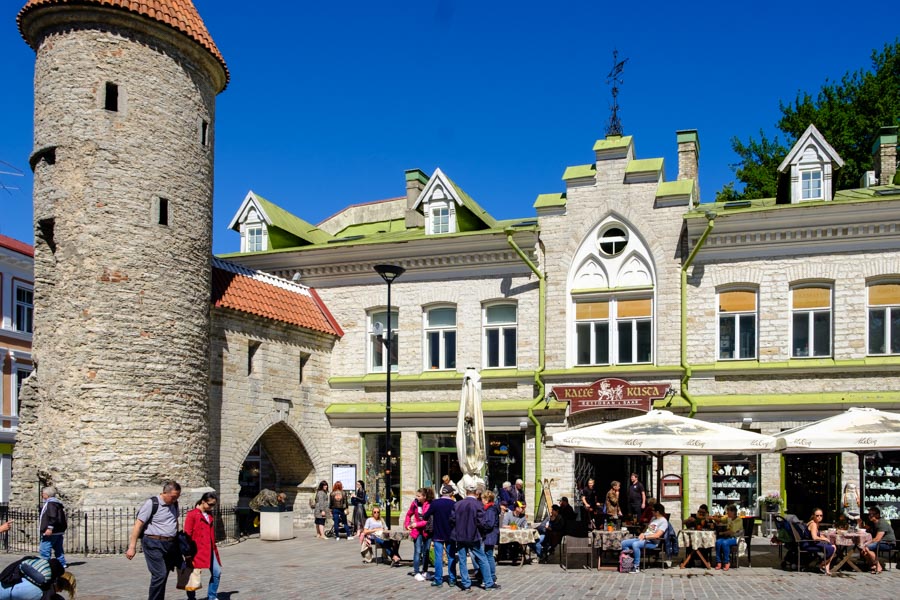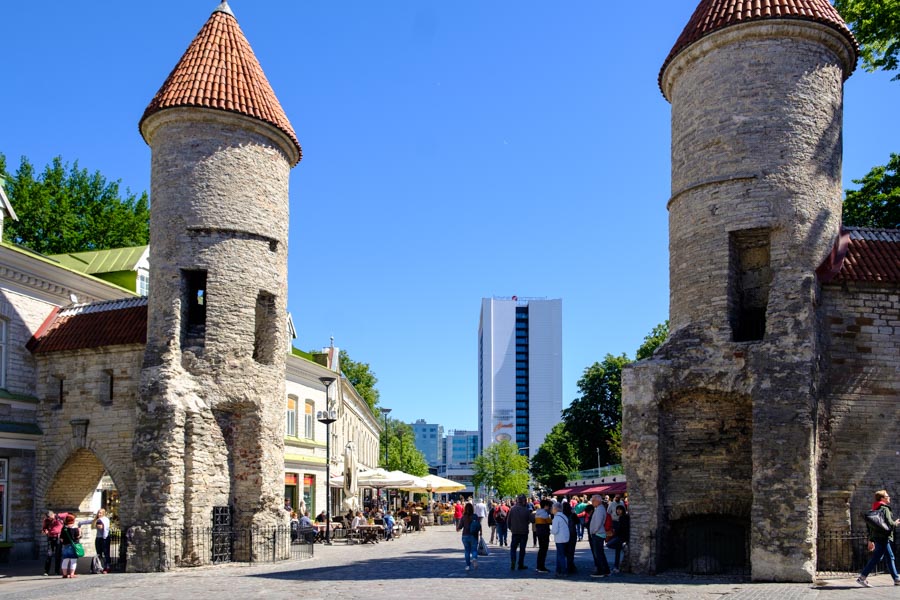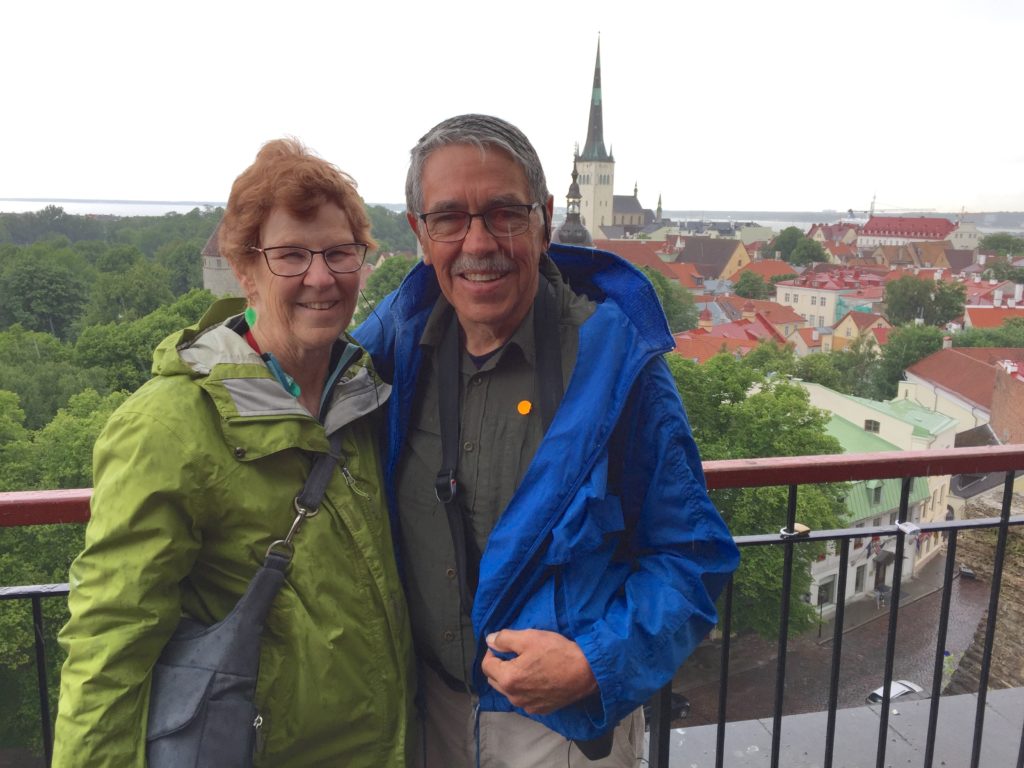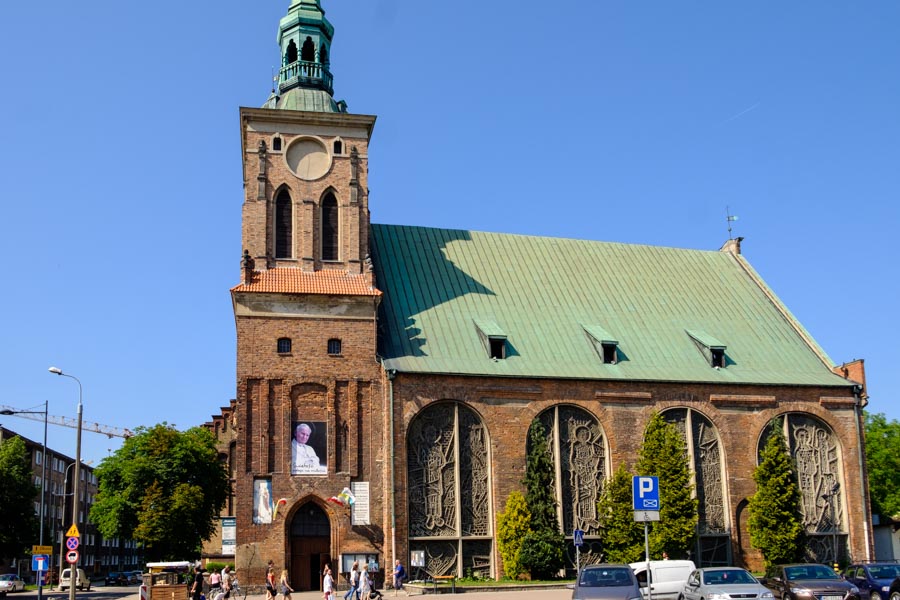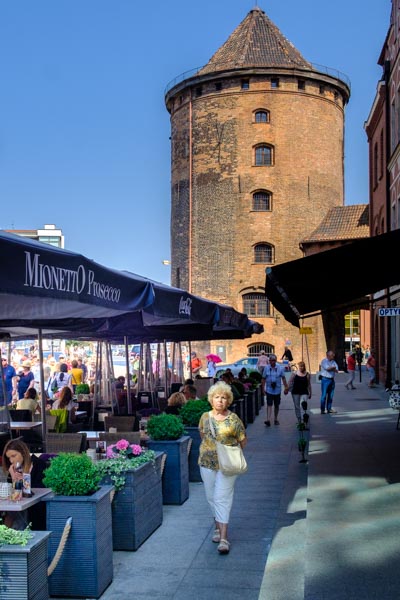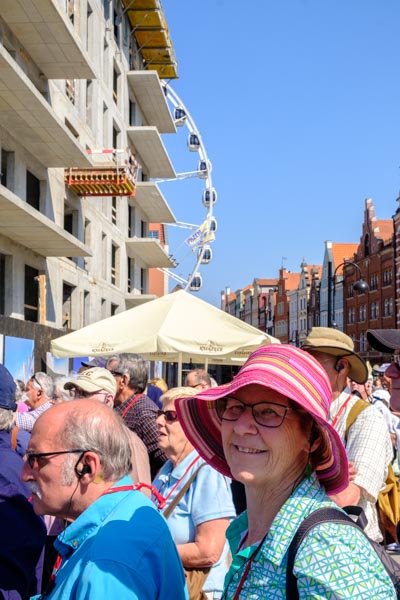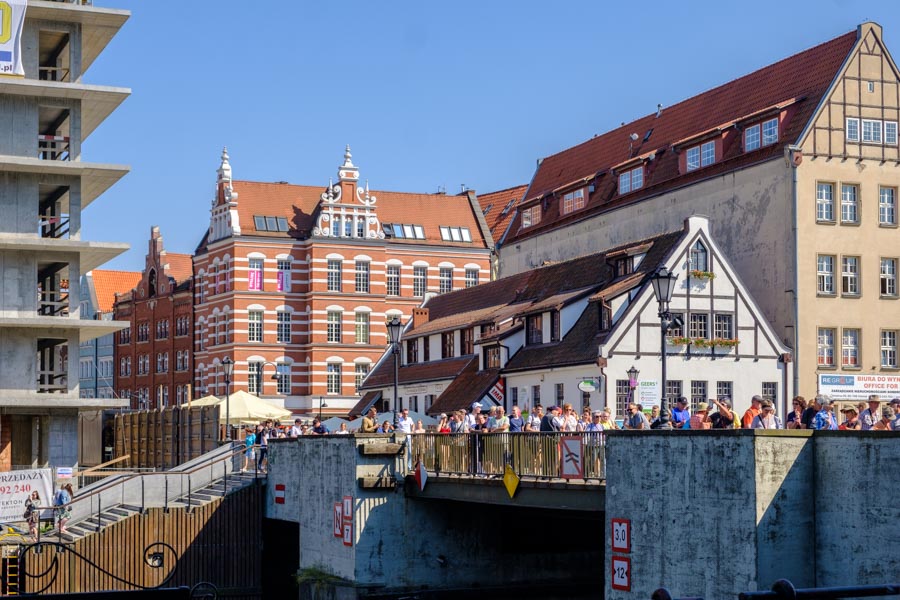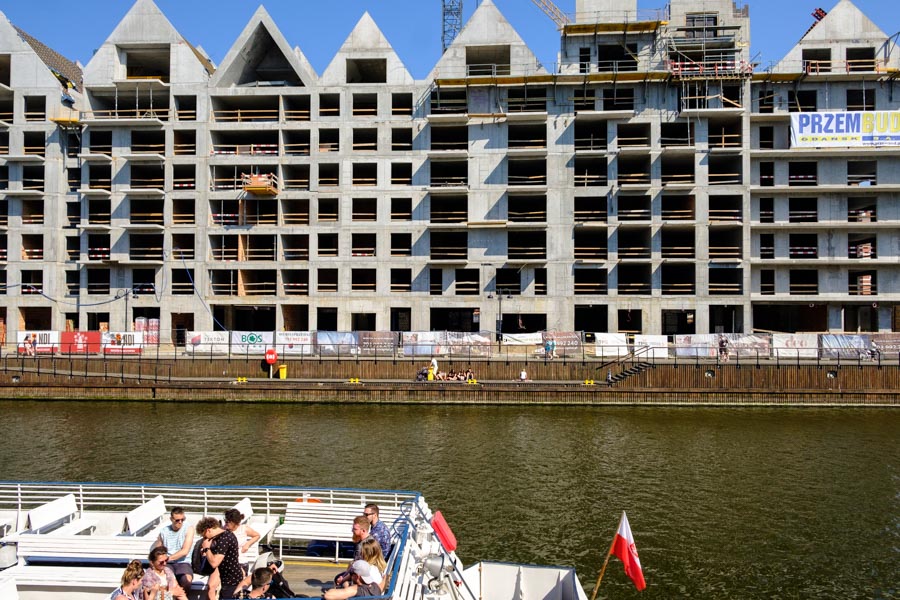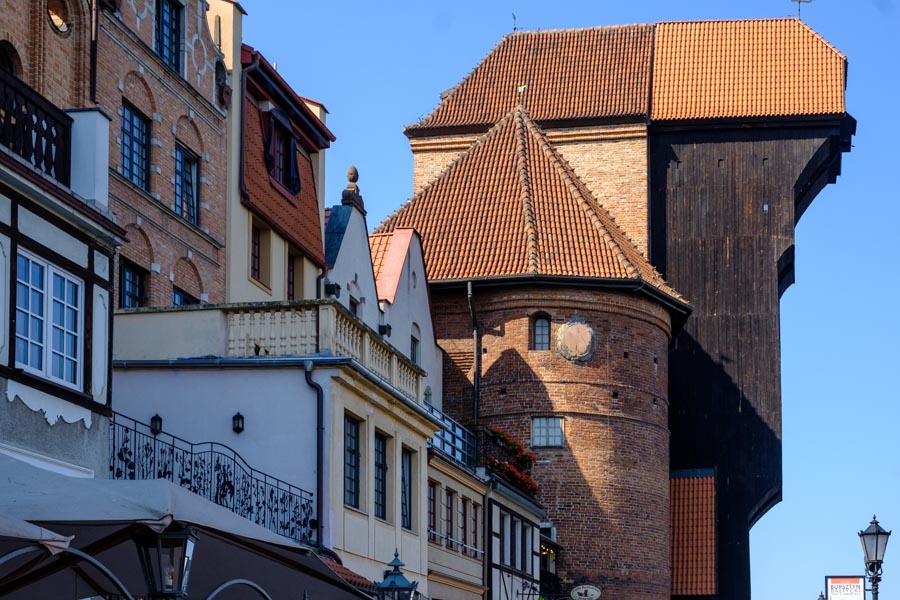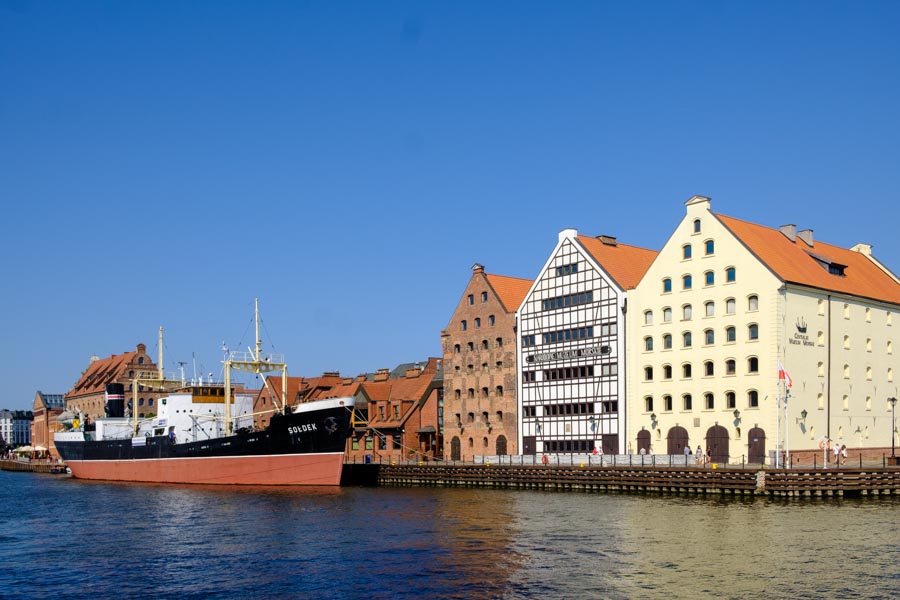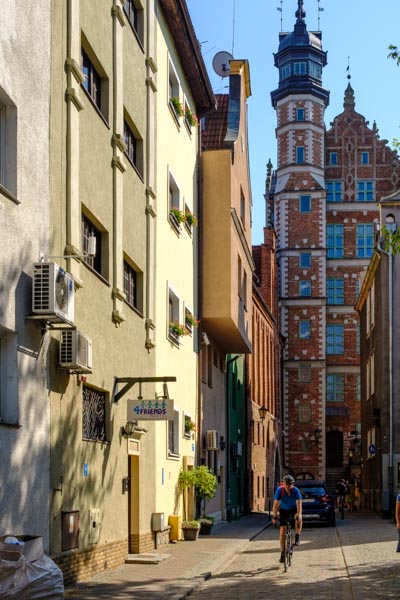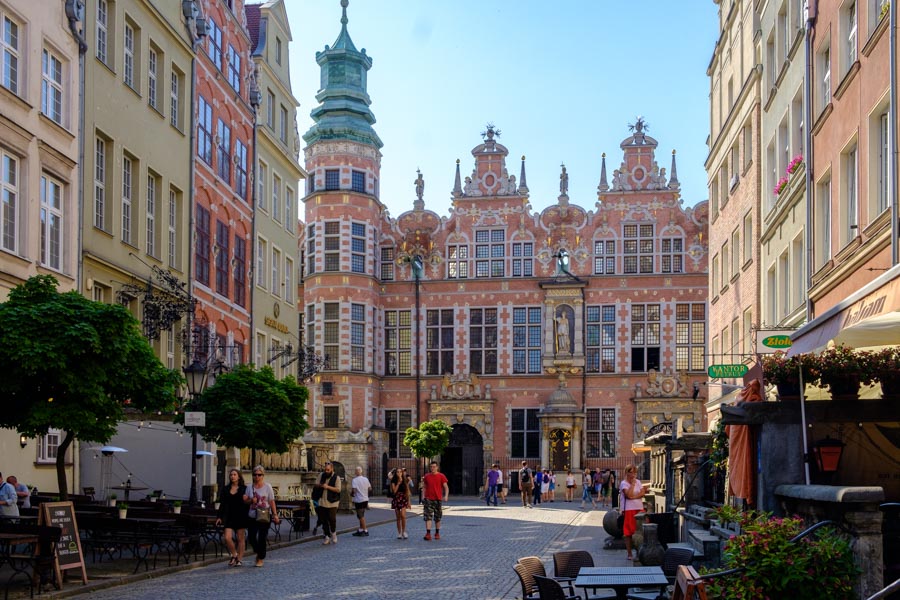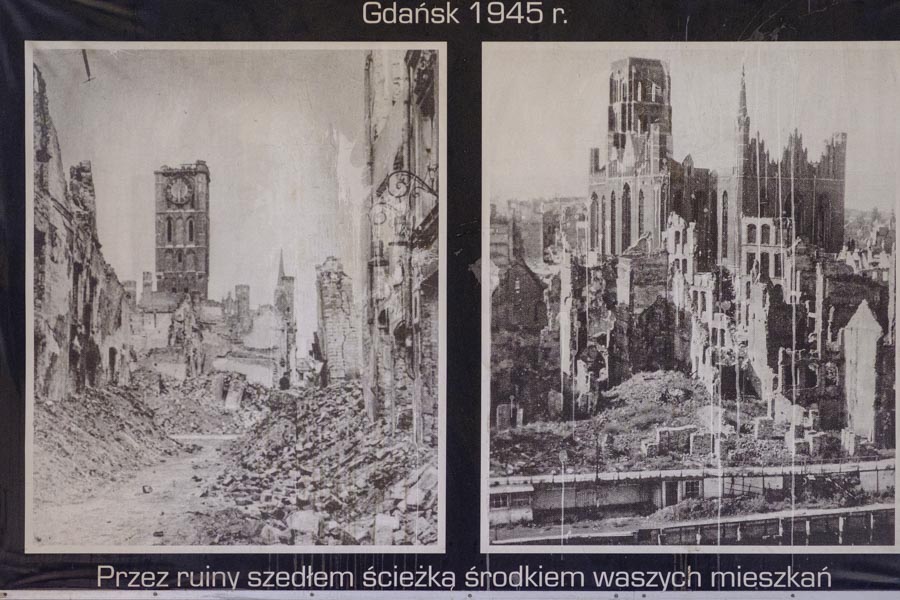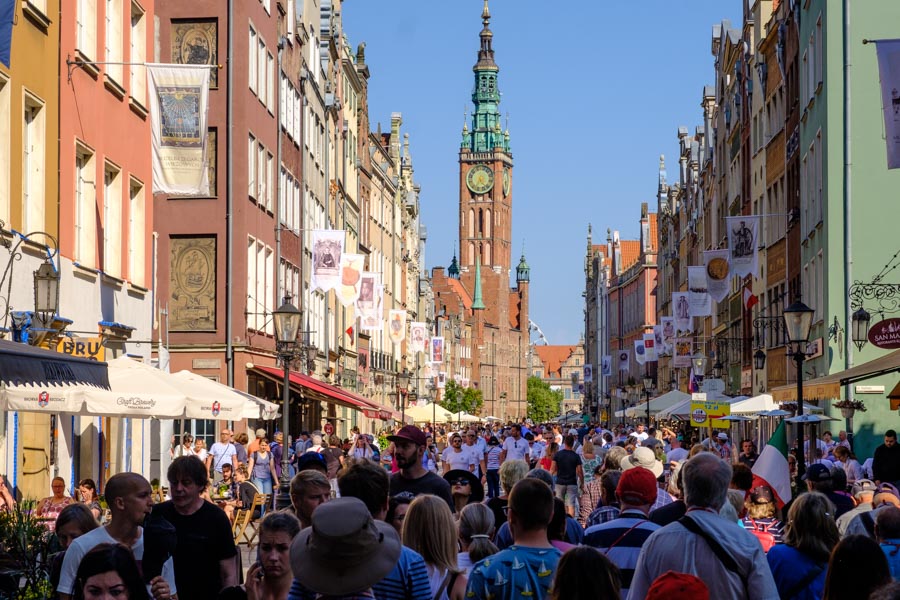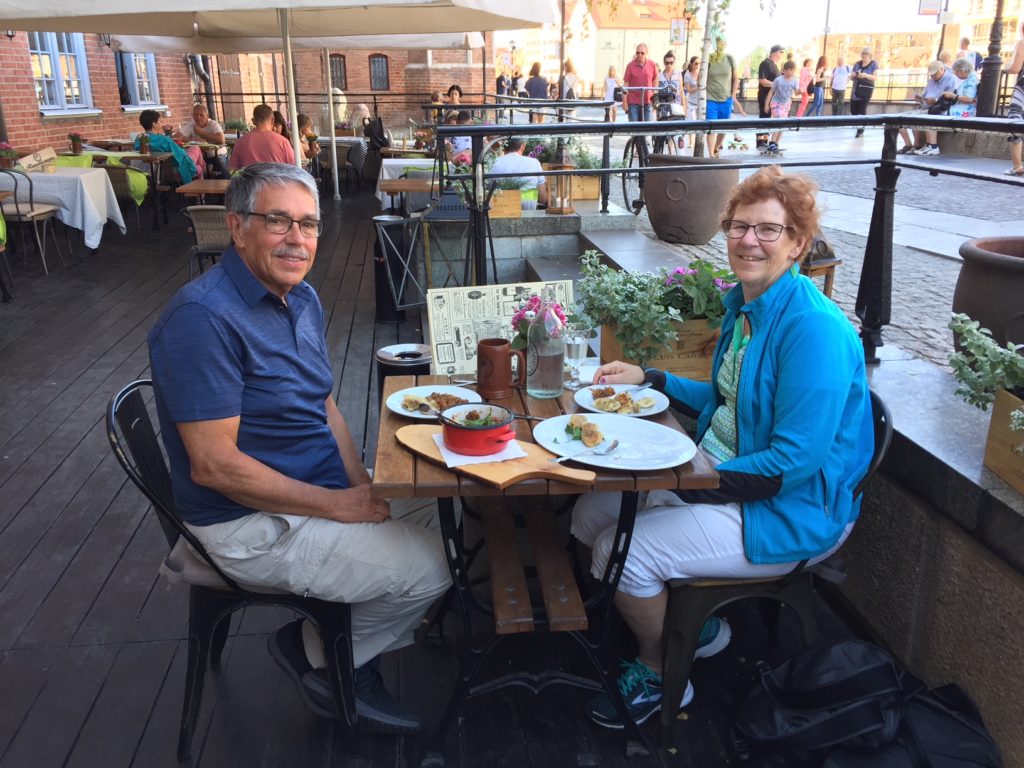Today we relived our visit to St. Petersburg 17 years ago, a trip that included not only with Valeria but Judy’s Mom, Margaret, and our friend Barbara Bear. Everywhere we went today we’d say, “Remember when . . . “ We saw nothing new. Much of the landscaping is new and much nicer now than in 2001, thanks to the beautification program home-town-boy Putin put in place for the 2003 tercentennial The trees are taller and the cars shinier but the main St. Petersburg attractions are still exactly where we left them.
Two tours today: Peterhof in the morning and the panoramic tour with three photo stops in the afternoon. The weather today ranged from cloudy to bright sunshine, interspersed with periods of brief rain showers. We had cool temperatures – in the mid 50s – and strong winds off the Gulf of Finland.
They turn on the fountains at Peterhof at precisely 11 AM so we first toured the palace interior. One gold gilded room after another. Actually, some of the rooms were in the rococo style with lots of gaudy gold. Catherine II (Catherine the Great) favored a more reserved classical style without so much gold. Each room sparked a moment of recognition for us. Sometimes I had a sense of deja vu, saying to myself, “I’ve taken this picture before.” I ran across the 2001 picture album while packing for the move; I’ll have to compare and see whether 17 years of picture taking experience and 21 extra megapixels have improved things or not.
Outside, when the fountains came on, I felt the pressure. At our house in Florida there is a picture of the Peterhof fountains hanging on the wall in the office. My challenge: to beat that picture with one even more wall hanging worthy. Not to make excuses for myself ahead of time, but today the place was mobbed. I was struggling with camera angles and getting a clear shot when an Asian lady pushed her way through six rows of tourists to the front, smiling and waving her camera in way of explanation, as if none of the rest of us had cameras. Today there were at least six cruise ships in port. Peterhof is the biggest tourist draw in St. Petersburg, ahead of even the Hermitage.
The real interest at Peterhof, in my opinion, is the way that Peter the Great’s personality shows through, and to lesser extent, the personalities of his niece, Empress Anna and his daughter, Catherine the Great. Peter was afraid of open spaces due to an unpleasant assassination attempt in a large open room. He constructed a small house near the water because staying in the main palace made him uncomfortable. He was an accomplished sailor and would sometimes travel from St. Petersburg to Peterhof alone, a 24-hour journey, so he could enjoy sailing and find peace and quite in his solitude. And he had a strong sense of humor. Several fountains were arranged so that unsuspecting guests would be suddenly caught in a spray of water. He would laugh uproariously, especially if the victims were ladies dressed in elaborate 18thcentury costumes and the water flowed down their rather ample décolletage.
If we’d never seen St. Petersburg we would have been sorely disappointed by the afternoon’s bus tour. Traffic was awful and travel was almost at a walking pace. To be so close without spending time at the Winter Palace/Hermitage Museum, St Isaac’s Square and Cathedral, Peter and Paul Fortress and Cathedral, the Russian Museum, the Church of Our Savior on Spilled Blood (the one with the onion domes where Alexander II was assassinated) and Nevsky Pospekt.
But, remember when we toured the Hermitage? Room after room of fine art but will it ever end? Huge rooms with tile floors and stone columns. Some one at lunch asked, “How did they ever construct such rooms and buildings in the 18thCentury? They didn’t have cement to make things nice and level, did they?” Good question.
Remember when Margaret and Judy bought amber jewelry from a street vendor while sitting in St Isaac’s Square? Judy and I were climbing to the top of St Isaac’s Cathedral; she stayed in the park and bargained (and she could drive a hard bargain, believe you me!). She didn’t close the deal until Judy got down to approve. Where is that amber jewelry, Judy? Dig it out and wear it some time!
Our guide didn’t mention it, but I remember clearly visiting the gravesite of Nicholas II and all but two of his family. Nicholas was executed by order of Stalin. They were dumped somewhere in the Ural Mountains; the location was a state secret until the end of the Soviet Union. Boris Yeltsin, in an effort to bring disparate members of Russian society together in the years of dramatic change, ordered the family interred in a crypt underneath St Peter and Paul Cathedral – three years before our 2001 visit (thanks, Wikipedia).
Remember when Valeria took us to the Russian Museum and explained the significance of the Russian artwork? Her grandfather was a painter and used to go to the Russian Museum to copy the masters’ work. Which reminds me of the night at a dinner party in Minnesota when Valeria, her grandfather and grandmother, her Aunt Lira and a Russian student named Stash taught us how to march and sing to patriotic Russian songs they learned as members of the Young Pioneers
I’ll check the old snapshots, but I’m pretty sure the Church of Our Savior on Spilled Blood was undergoing reconstruction in 2001 just like it was today.
And remember when we stopped with Valeria and her brother Dmitri at the Café Europe on Nevsky Prospekt, the glitzy shopping street of St. Petersburg? We had our first taste of borscht at the fancy restaurant inside. I think we all felt a little underdressed and undeserving of being in such a high-class establishment.
So we got to snap our snapshots (“Be back on the bus in 15 minutes, please.”) and to relive the old memories. Thank goodness for memories!
Just before we got on the bus for the afternoon trip Valeria texted us: “I have the afternoon free. Can we get together?” The schedule was too tight to make it work, but it brought tears to our eyes to have her reach out and ask. Somehow we’ve got to get back together, here or somewhere in Europe, maybe, before another 17 years pass.

